After a lovely two weeks on the farm we set off North again. We picked up Marleen from the airport two days ago and spend the previous day packing in. On the last night on the farm we had a superb veldbraai with Friedrich and Anra and all five of their dogs.
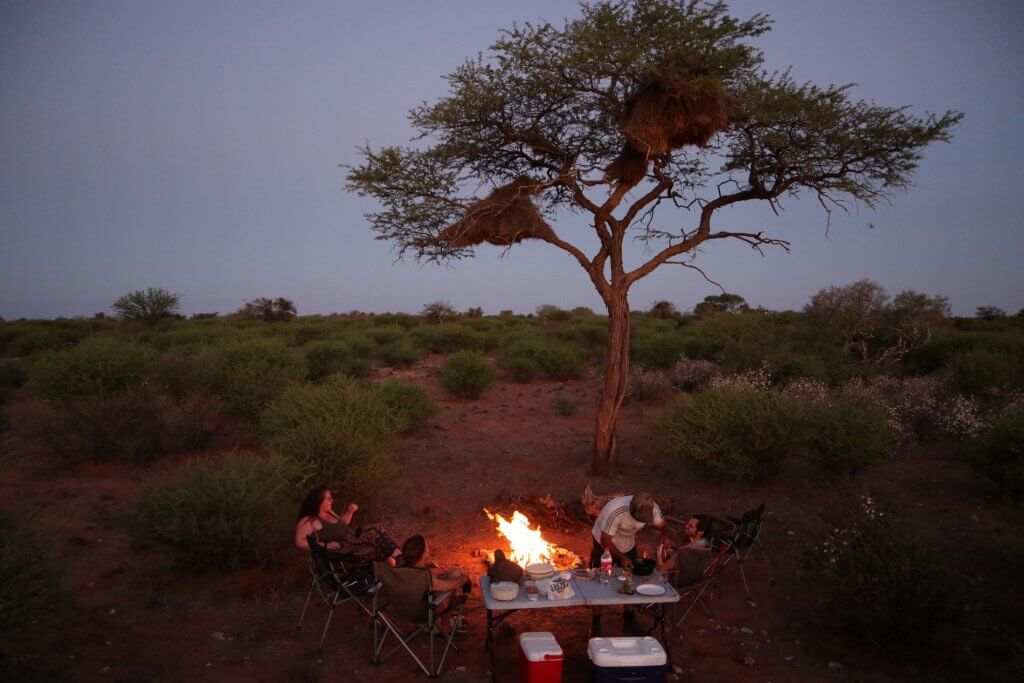
We drove via Rehoboth to Windhoek where we first stopped at the Grove mall for some grocery shopping. We camped at Urban Camp in the city center, but it was remarkably quiet. We walked to Joe’s Beerhouse for an early evening beer and then Marleen braai’d a steak for us at the campsite.
The next morning Hugo first went to re-gas the aircon, while Caro and Marleen browsed in Uncle Spike’s bookshop. We took the B1 to just before Otjiwarongo, where we turned right to the Waterberg Plateau. The private Wilderness campsites were fully booked so we had to stay at NWR. The facilities were perfectly fine and the views just as amazing.
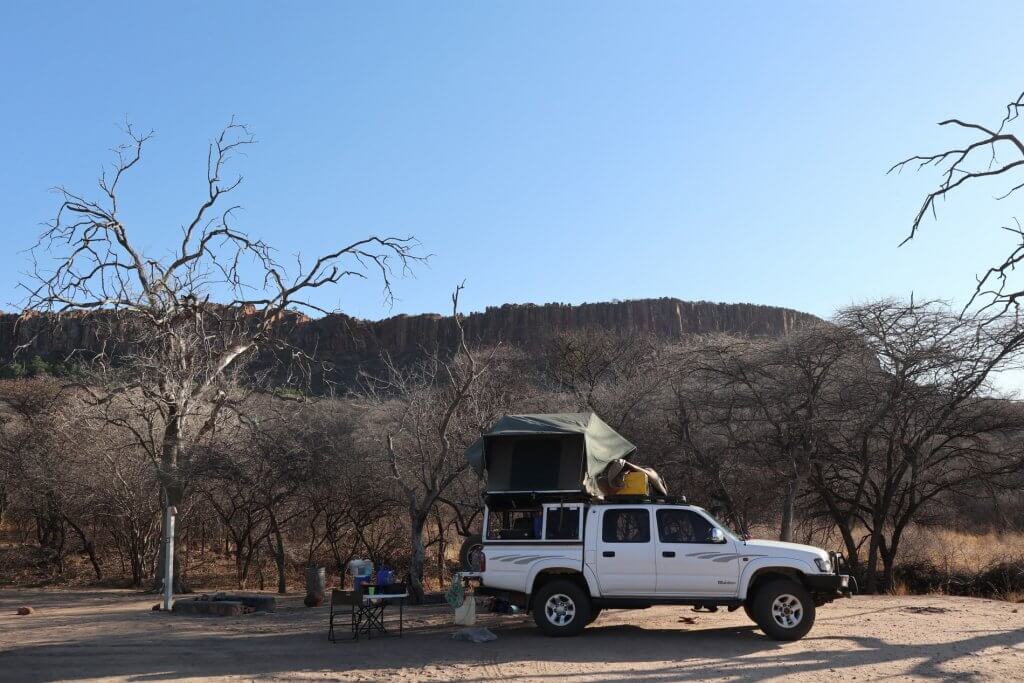
We went for a evening walk and swim and then in the morning we hiked to the top of the plateau.
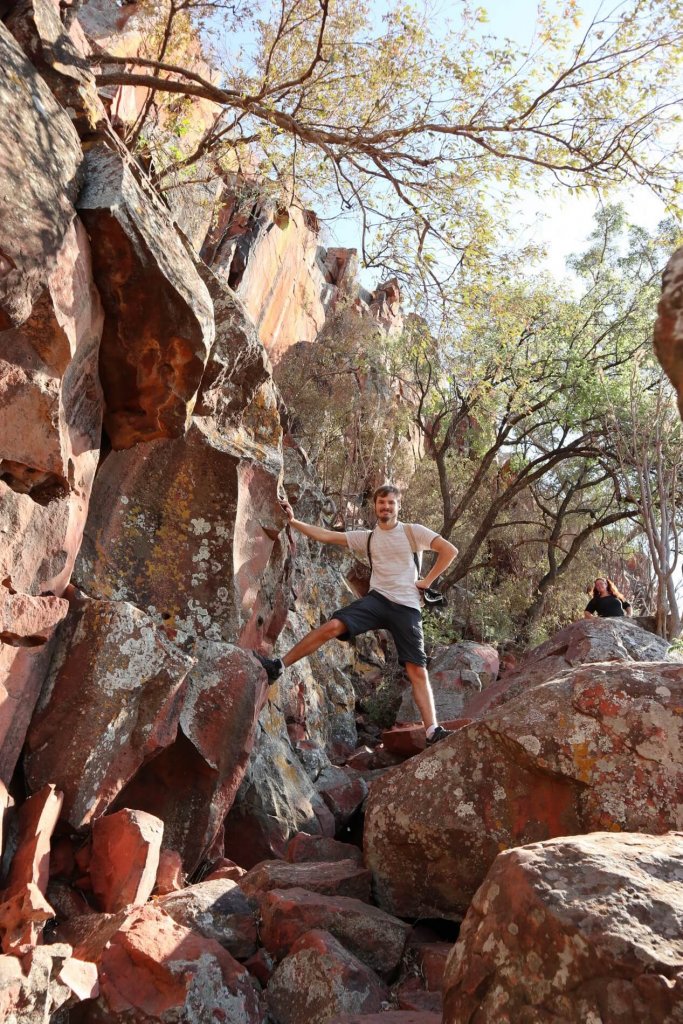
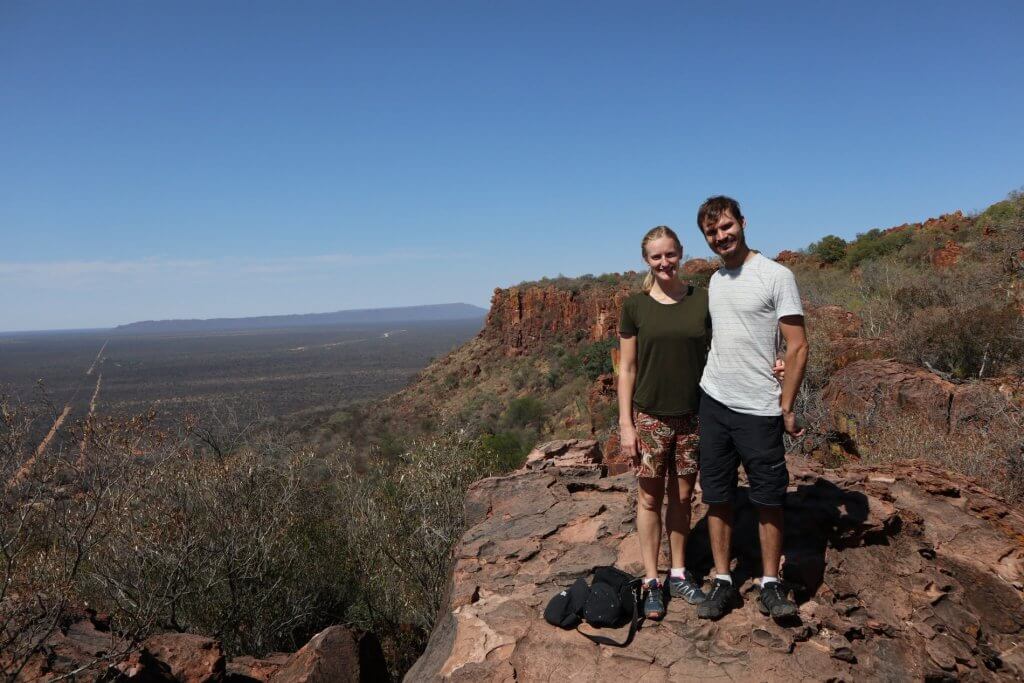
From Waterberg we drove on gravel roads until Grootfontein where we stopped at the Hoab Meteorite again for Marleen to see.
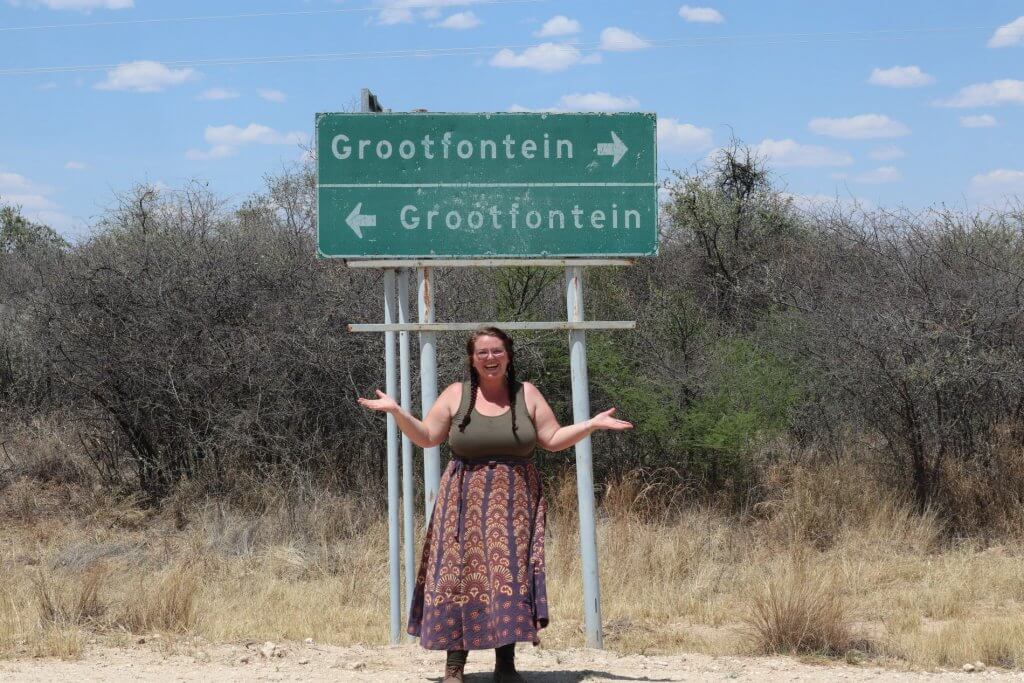
We camped in Tsumeb at Kupferquelle for two nights to try and get as much work done as possible before heading into Angola.
On Monday the 5th of November, 2 months after setting off in Cape Town the day for crossing into Angola finally arrived. We still weren’t sure if we were going to be allowed in, but after much uncertainty we were sure that we’ll at least try.
We got to the Oshikango border at around 14:45. Exiting Namibia was super easy as expected. We drove over to the Angolan side, where we suddenly had to drive on the other side of the road and stopped in the middle of a large parking lot with no other vehicles.
There were two massive warehouse size buildings and two small ‘security booths’. A few fixers came and told us the passport check is in the first ‘booth’. The lady immediately gave us 30 days without us even asking or filling in any forms.
For the vehicle the strange process then started. The one guy told us we needed a copy of Hugo’s passport and the entry stamp (which we also read about), but he has to go make the copy in town so Hugo had to give him N$4 and his passport.
In the other booth we received a form from an official that had both Portuguese and English, but the fixer proceeded to explain what to fill in, in each field.
The official didn’t speak any English and worked through the fixer as if they are officially welcome. The one fixer returned with the passport and copy, and we already had copies of the vehicle papers, driver’s licence and photos of the side, front and back of the vehicle printed on an A4.
The stack of papers were then taken to a room in the massive warehouse where we received an invoice which then had to be paid at the bank, also located in the warehouse. The fixer paid the 6400 kwanza out of his pocket as we didn’t have any kwanza. Back at the booth the official entered some more things into the computer and then did a quick inspection of the vehicle.
During this whole time we were the only vehicle crossing the border. The whole procedure was friendly and relatively easy, albeit very strange and slow.
We drove out of the gates to where the fixer waited to do a forex trade. Angola has a parallel forex market so one can usually get better rates on the black market than through the banks. We were however surprised that we got a 22% better rate for exchanging Namibian dollars, and only 16% better rate on US dollars (compared to the official rates). We got 25 kwanza for 1 N$ (1 ZAR) and 350 kwanza for 1 USD. We exchanged 1500 N$ and 100 USD.
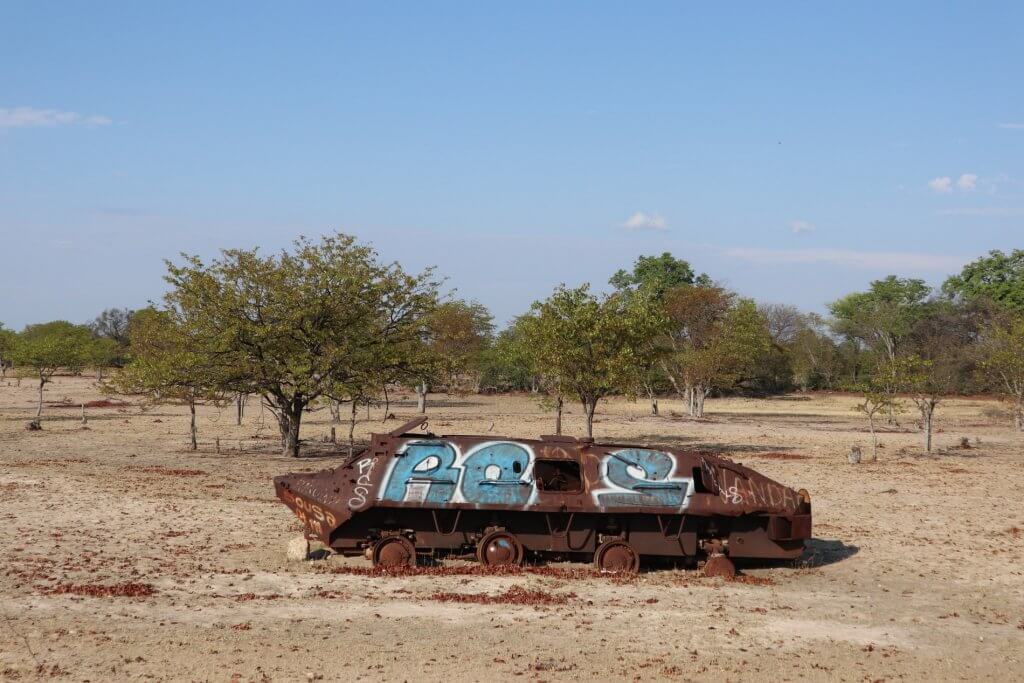
Finally we were really in Angola and driving on the right hand side. We drove past a Puma fuel station and worked out that Diesel only costs R5.40 per liter (and we just filled up before the border at R14.30 per liter).
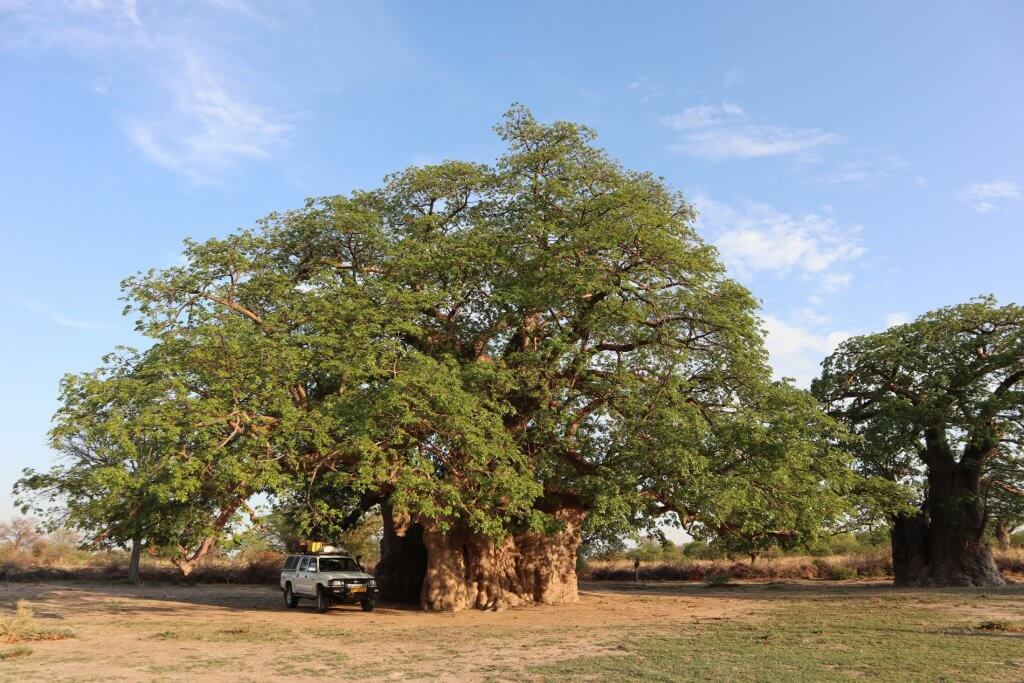
We drove to Xangongo on a perfect tar road. There we camped under a giant majestic Baobab tree 6km from the town down a small two spoor track. The tree is really so big that 8 vehicles can stand front to back around it.
Quite a few people saw us there, but everyone either just went on with their own business or waved a friendly hello.
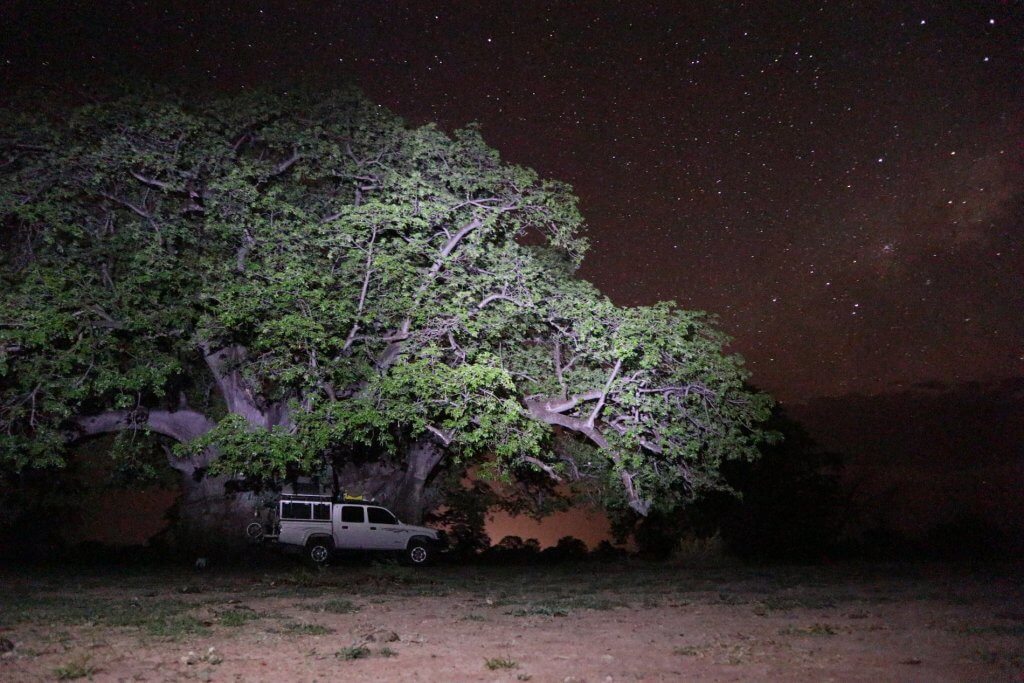
We ate left over pasta from the previous night and went to bed after trying to take some star photos.
The second day in Angola took us to Lubango. People warned about the condition of the road, but it was perfect until 20km before Lubango where there were a few potholes being repaired, but we didn’t even need to slow down to miss them.
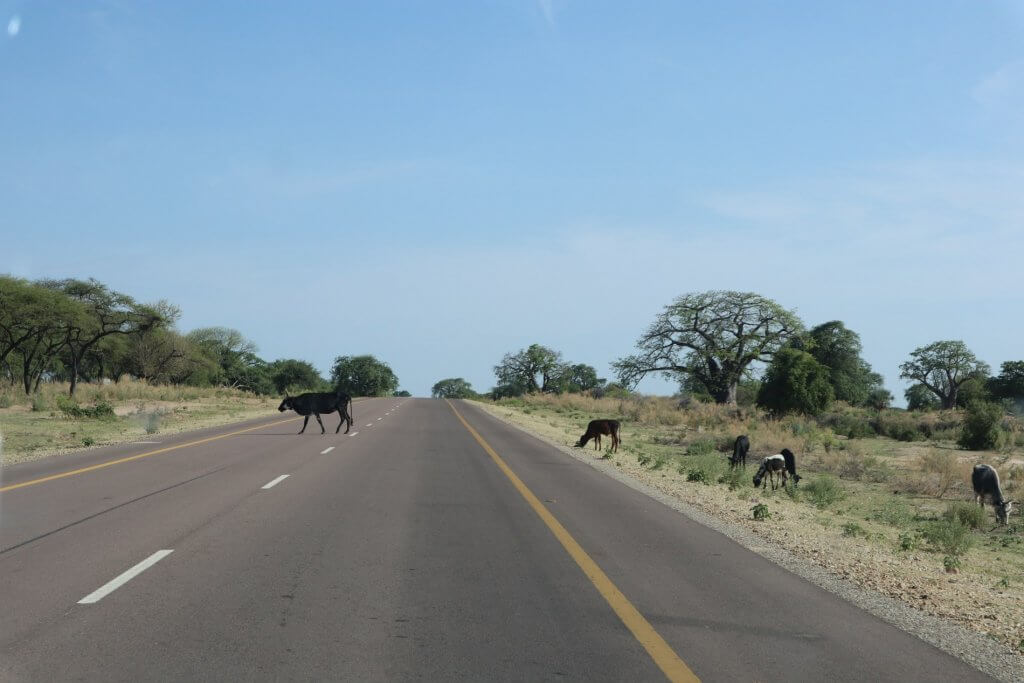
We passed two roadblocks on the way, but at both the police were super friendly and just interested in trying to chat to us in Portuguese and to check our documents. They didn’t even hint at wanting a cooldrink or money like in Mozambique.
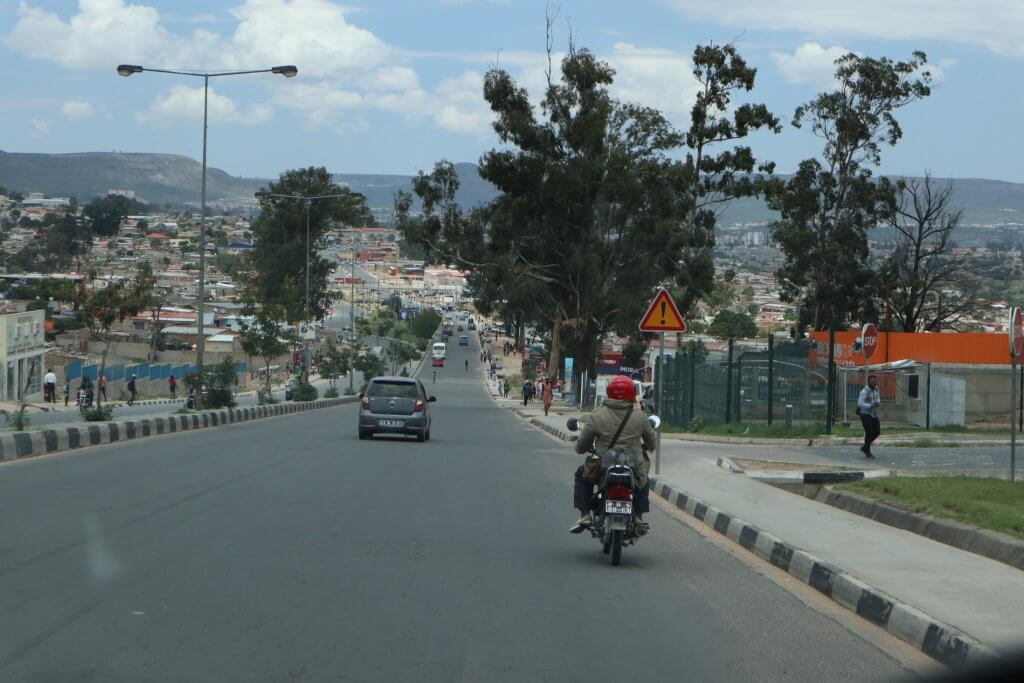
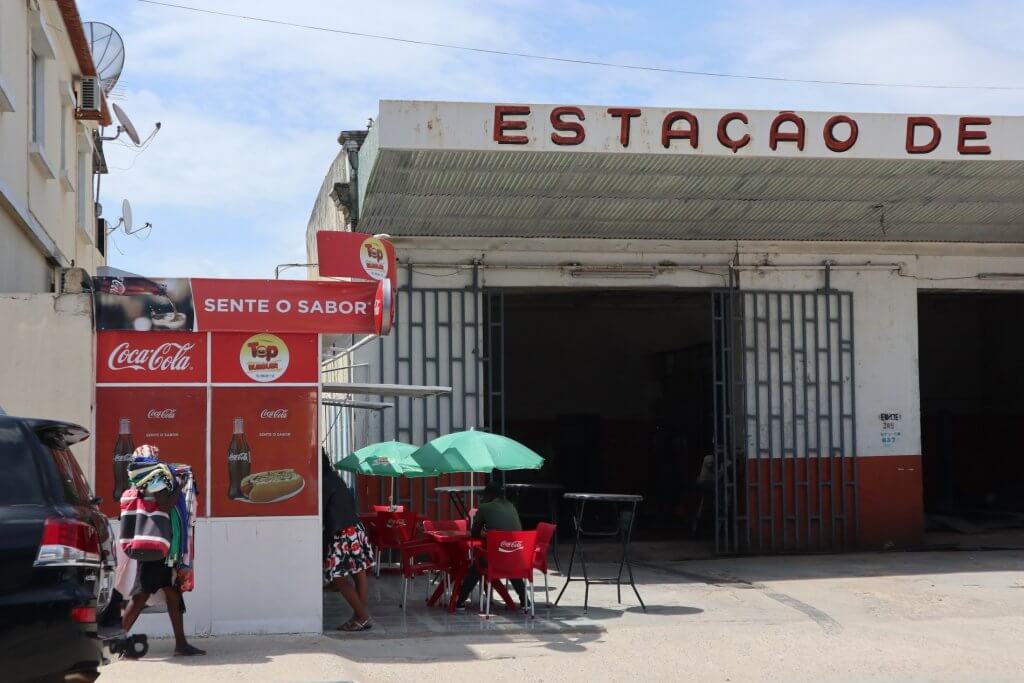
In Lubango, Hugo bought a sim card and then we had lunch at a roadside cafe selling burgers and toasties.
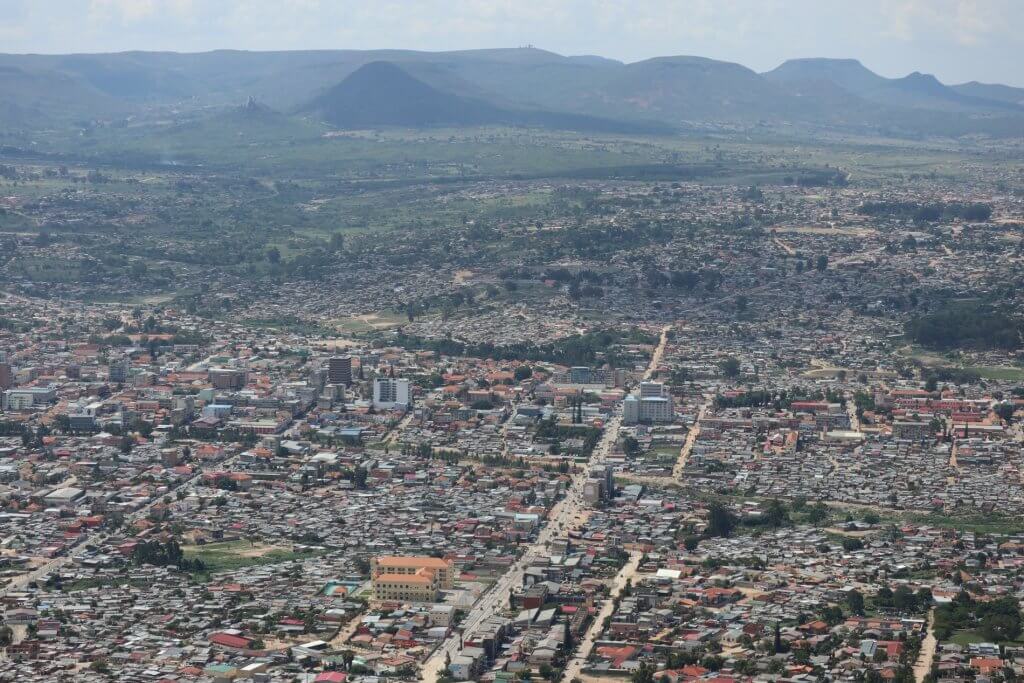
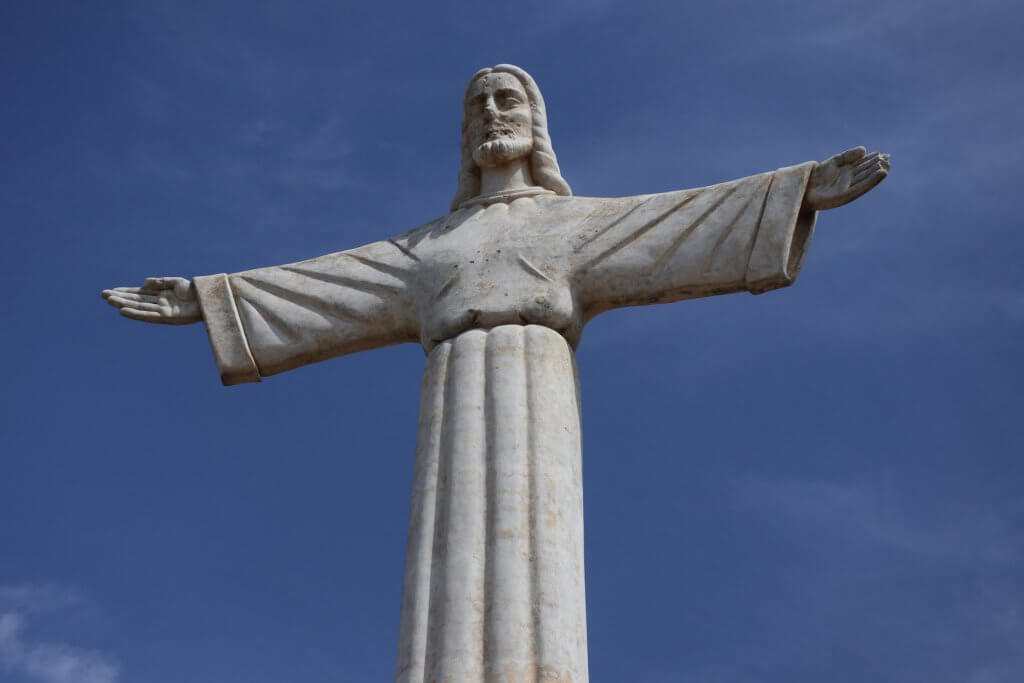
We went up to the Christ Redeemer statue. We were the only tourists there and there’s no entrance fee. Two young Himba girls didn’t understand that Marleen wanted to take a Polaroid picture to give to them in exchange for taking another one that she could keep. So even after giving them the Polaroid they still wanted money, which is probably understandable if that was the only reason they’re hanging out at the statue.
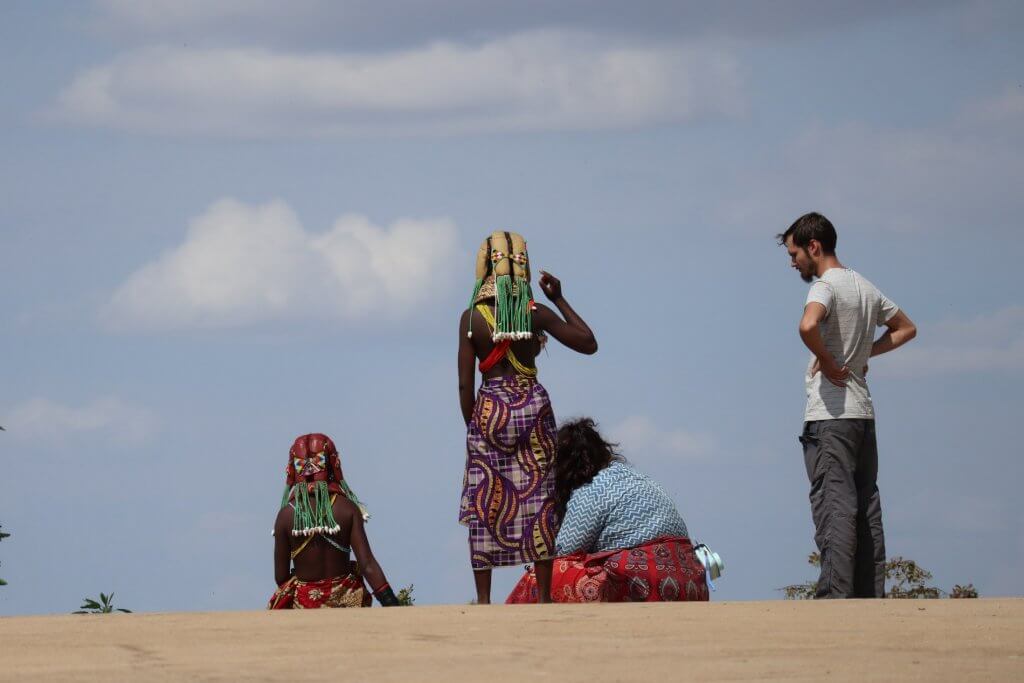
From the statue we set off to the other side of Lubango to Tundavala. The famous drop. A brick paved road leads to a big parking area, but again we were the only people. The view point on the cliff edge is literally breathtaking. We all reeled back from the intense feeling when looking down the sheer drop of 900+ meters.
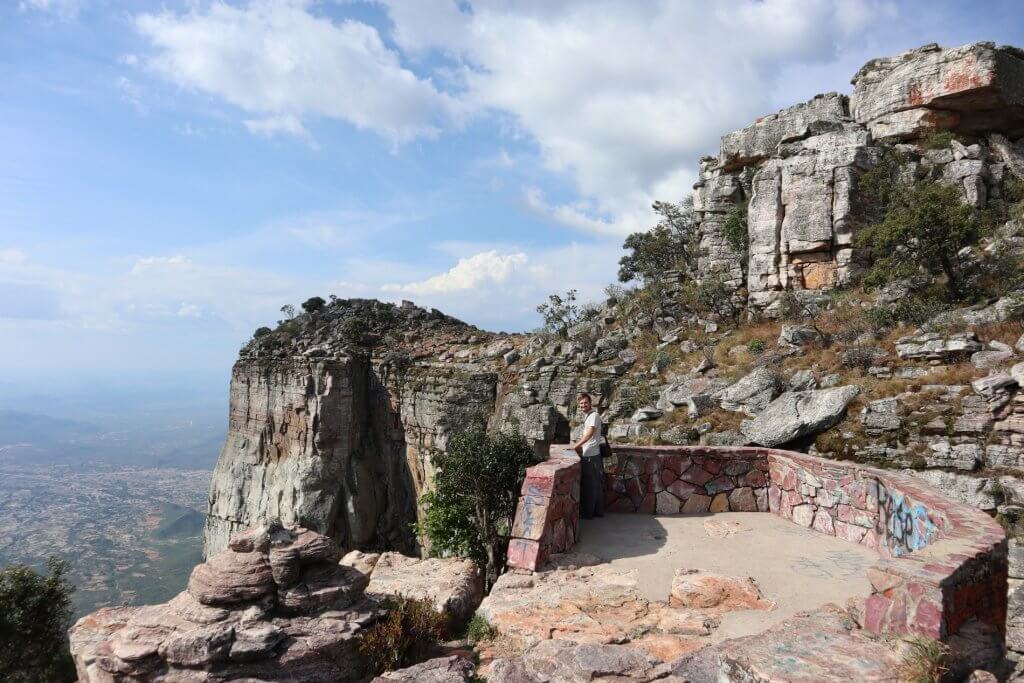
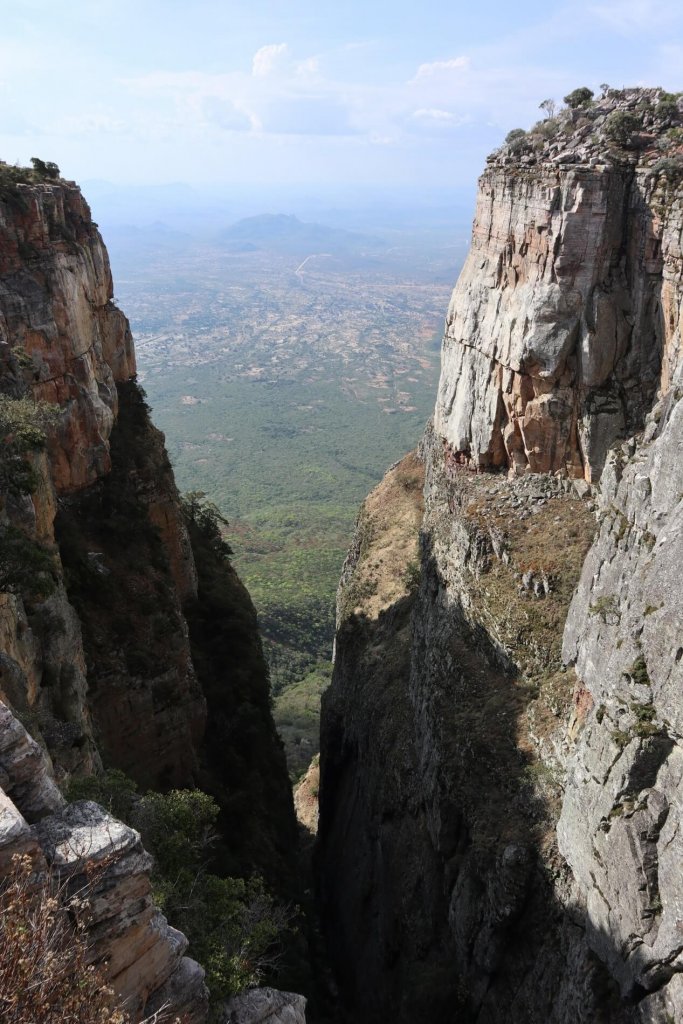
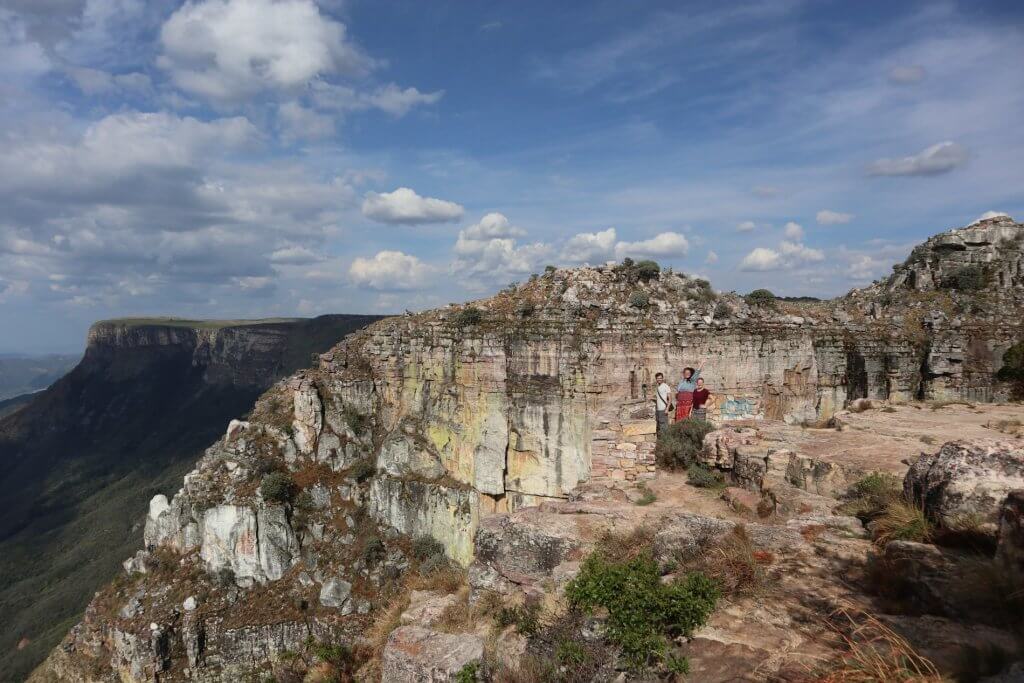
We spent a long time taking photos and videos and even flying the drone. During this time some locals came and went. By 16:30 we took the two spoor track that turns off of the brick road just after the parking. On iOverland there are 3 wild camping spots indicated. The first one were too close to the parking area so we checked out the second one. It’s a beautiful site, but quite exposed to wind and not very flat. We thus continued to the third spot, which were amazing. It is super secluded from any form of civilisation, it is a flat area and there or some rocks for shelter from the wind.
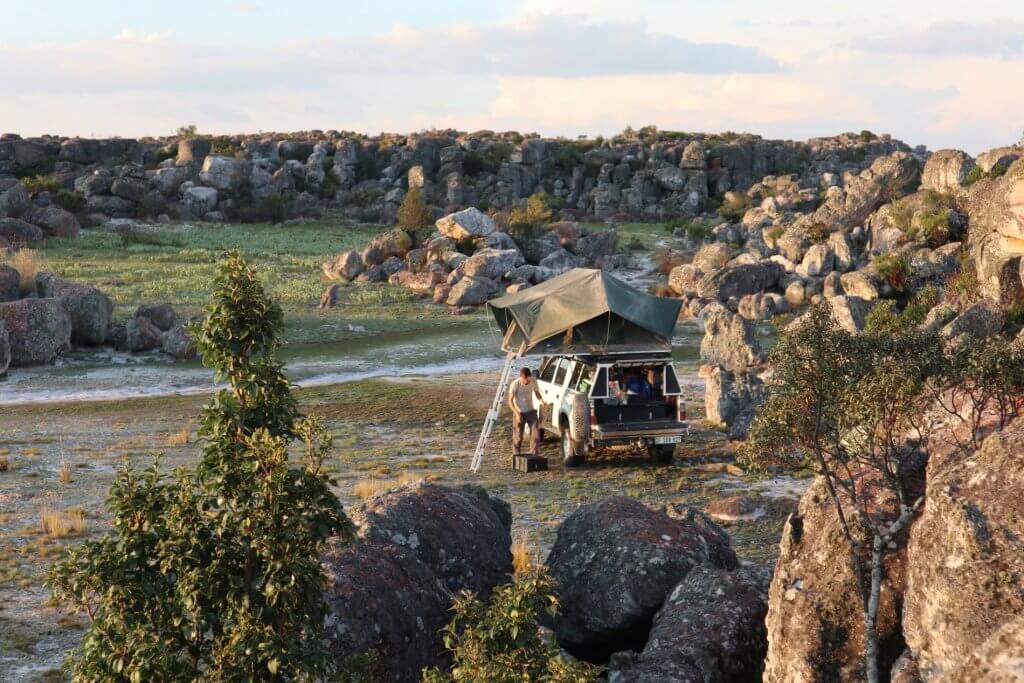
We set up camp and went to watch the sunset over the plains below the plateau. We braai’d boerewors and braaibroodjies and soaked in the bright stars.
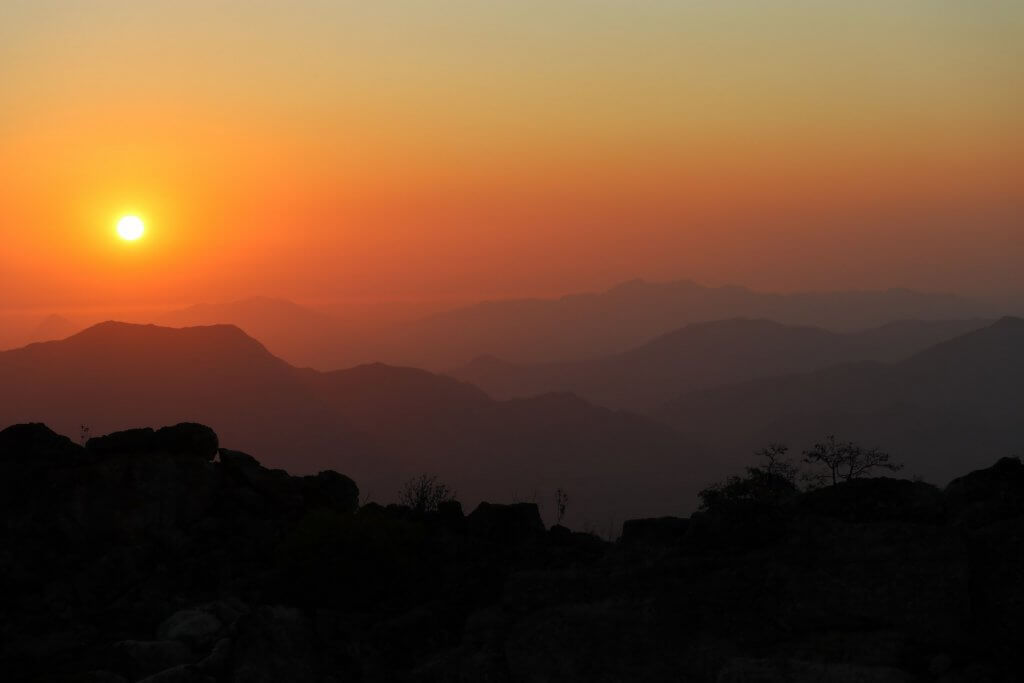
We had a good sleep and decided to stay another night. We lazed around and took an afternoon nap. At 16:00 we followed a hiking trail. The trail winds through interesting rock formations before opening up on a grass plateau. We could look back to the cliff we stood on yesterday and also over the valley with the different layers of mountains on the horizon. The highlight however was the lone tree in the middle of the grass field another 800m away. Marleen first saw it yesterday from the viewpoint and fantasised about getting to it. From the official viewpoint it looked impossible to get to. And even when we saw it from closer we still thought there would be a valley between us and the tree. Luckily it was just a small dip and we could walk down and up to the tree. Getting to the tree with the amazing views were just indescribable. We took lots of photos and videos, but it won’t do the experience any justice. The fact that we’re in Angola, wild camping and we haven’t seen anybody all day long, it all just felt surreal.
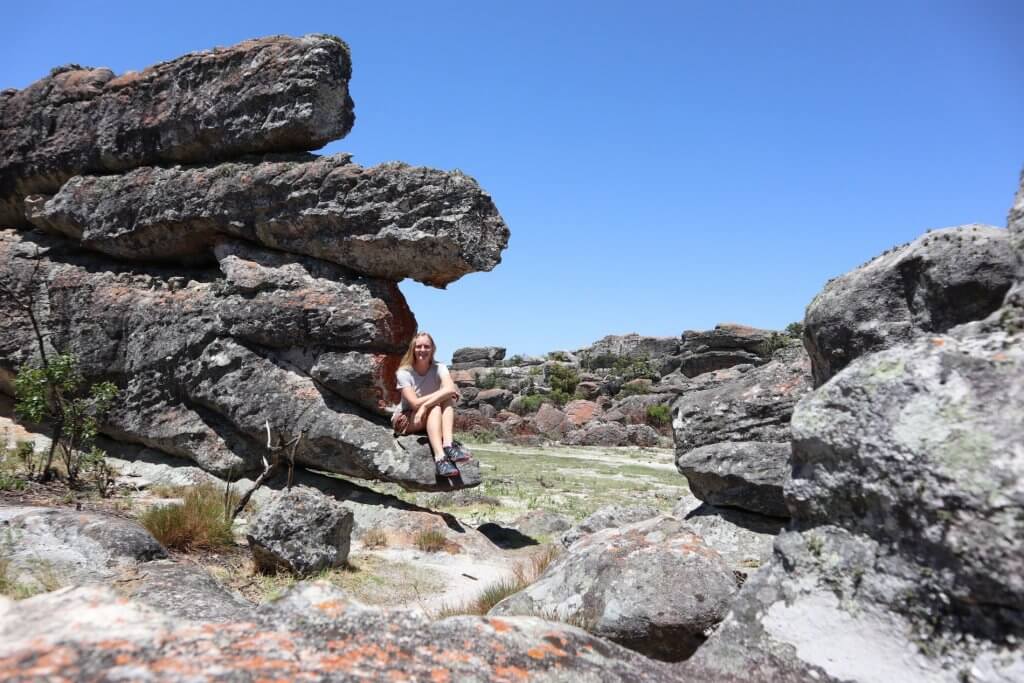
Back in Lubango the next morning we stopped at Angomart for Marleen and Caro to check out what Angolan supermarkets look like. They mostly just bought snacks, but almost spend an hour inside just looking at all the products we don’t get in South Africa.
After Angomart we fixed a tyre puncture and filled up 70 liters of Diesel for only 9400 kwanza (R376), three times cheaper than in South Africa.
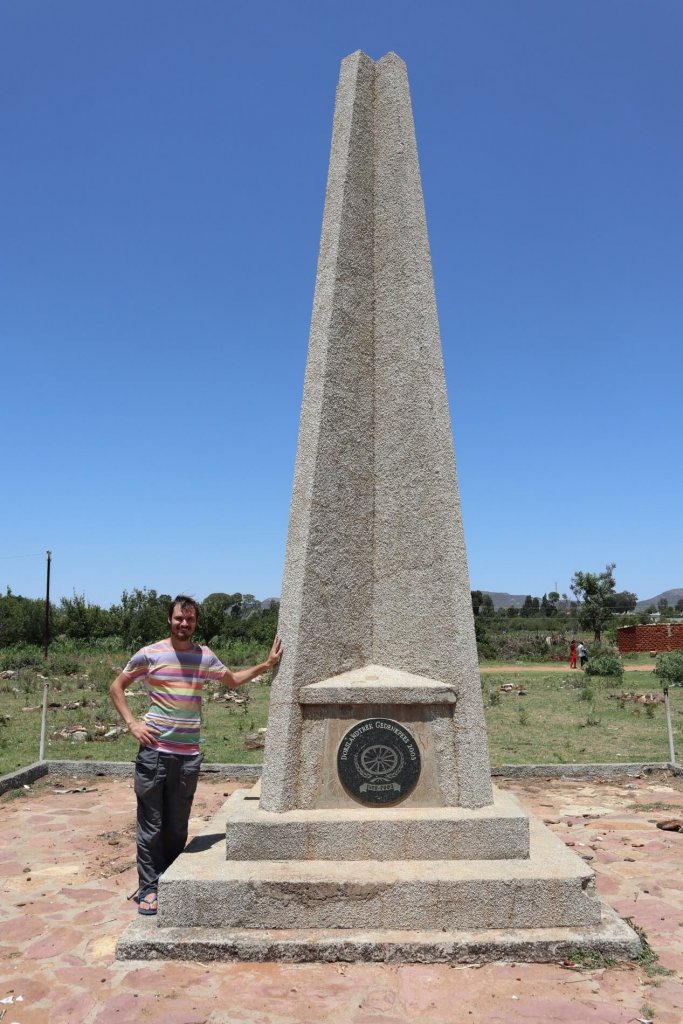
Having done all our ‘business’ in Lubango we set off for Namibe. Just outside Lubango is Humpata where we stopped at the Dorsland Trekkers memorial. It’s just a simple cement monument at an old graveyard, currently between mud houses where locals live.
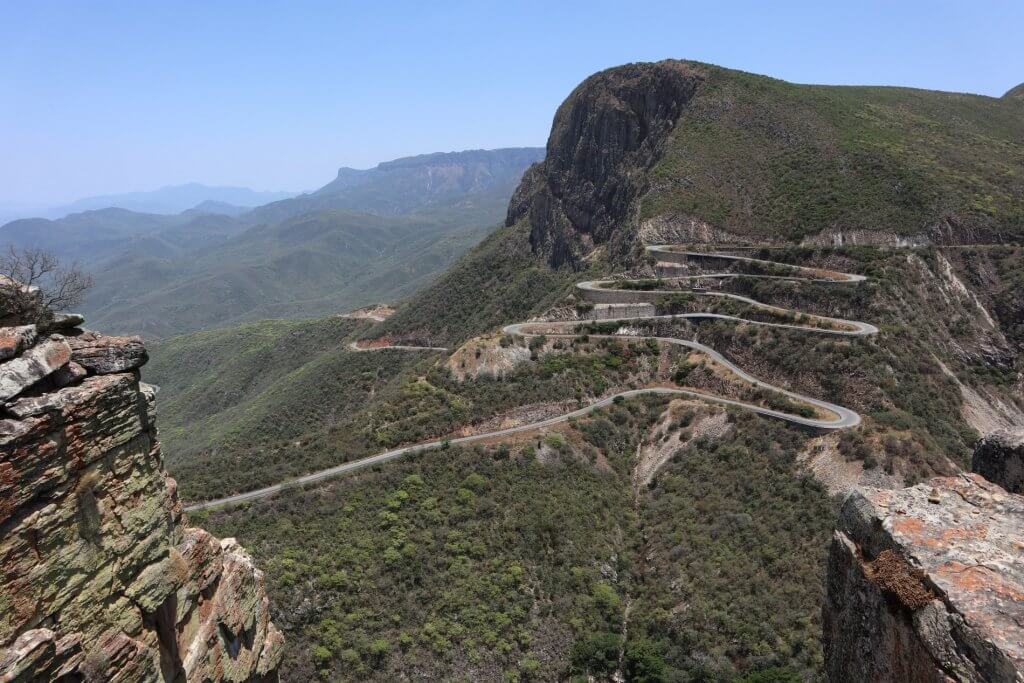
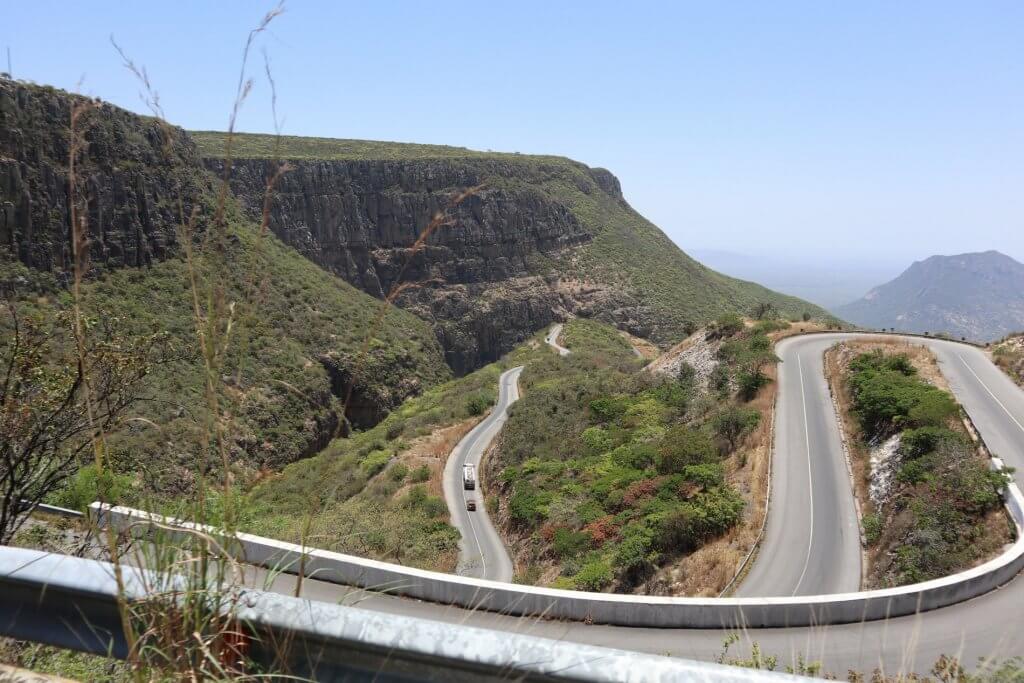
After Humpata we got to the incredible Serra da Leba pass. Coming from the top of the plateau we could first stop at the viewpoint overlooking the pass before driving down it. We had brunch and took lots of photos. The views when driving down the steep pass is superb.
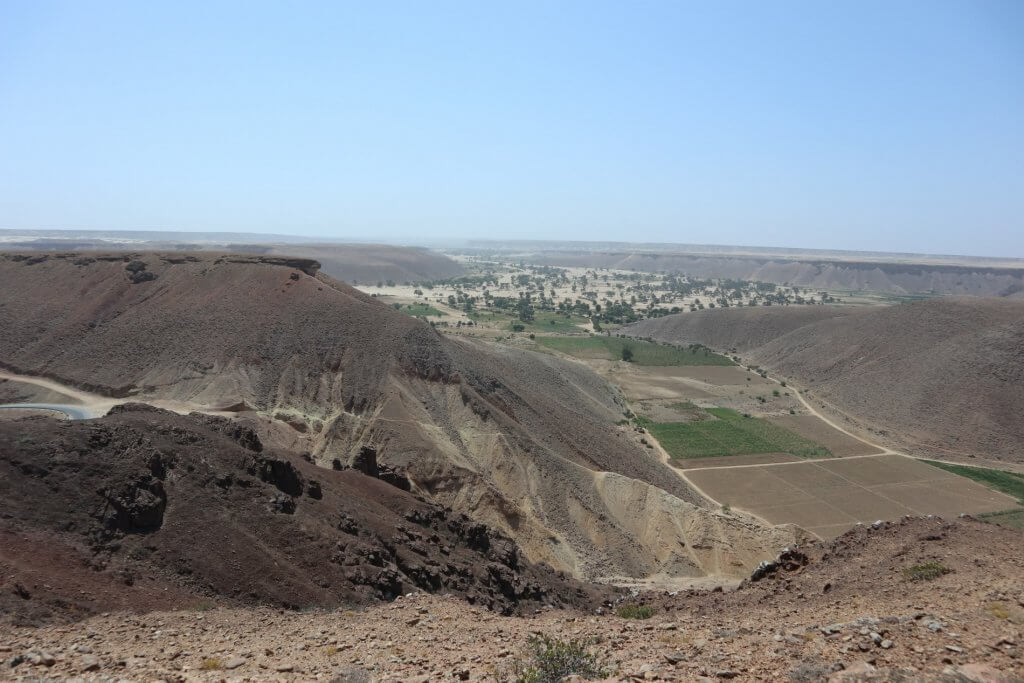
The landscape quickly started to change and before we knew it we were in the rocky desert. The road had some potholes, but nothing compared to Mozambique’s EN1.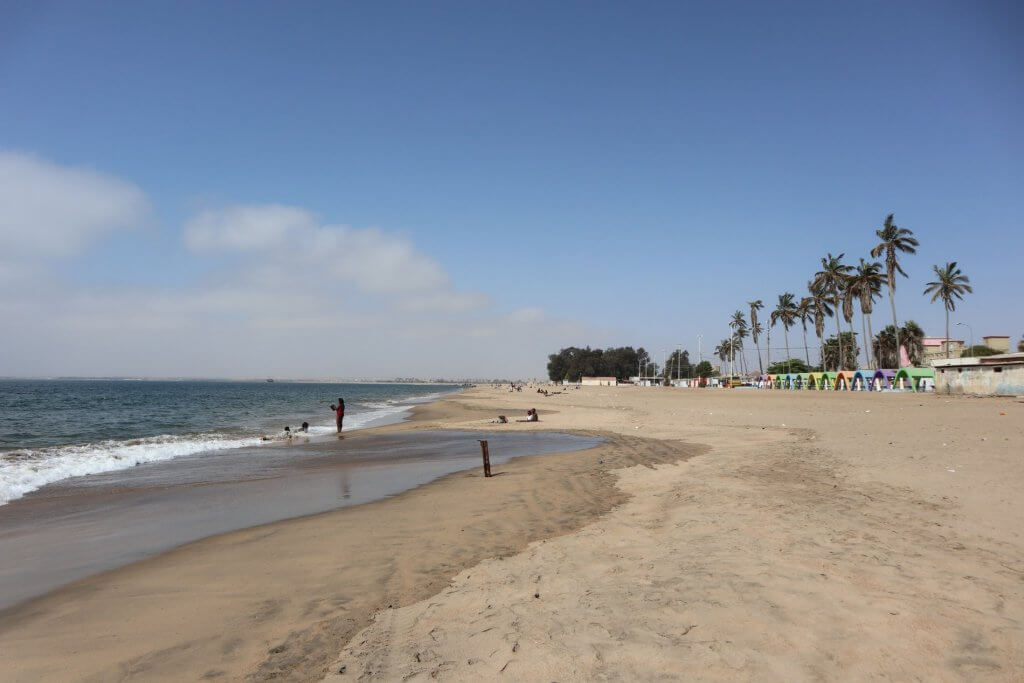
In Namibe we stopped at the beach and then in the main road for some photo opportunities.
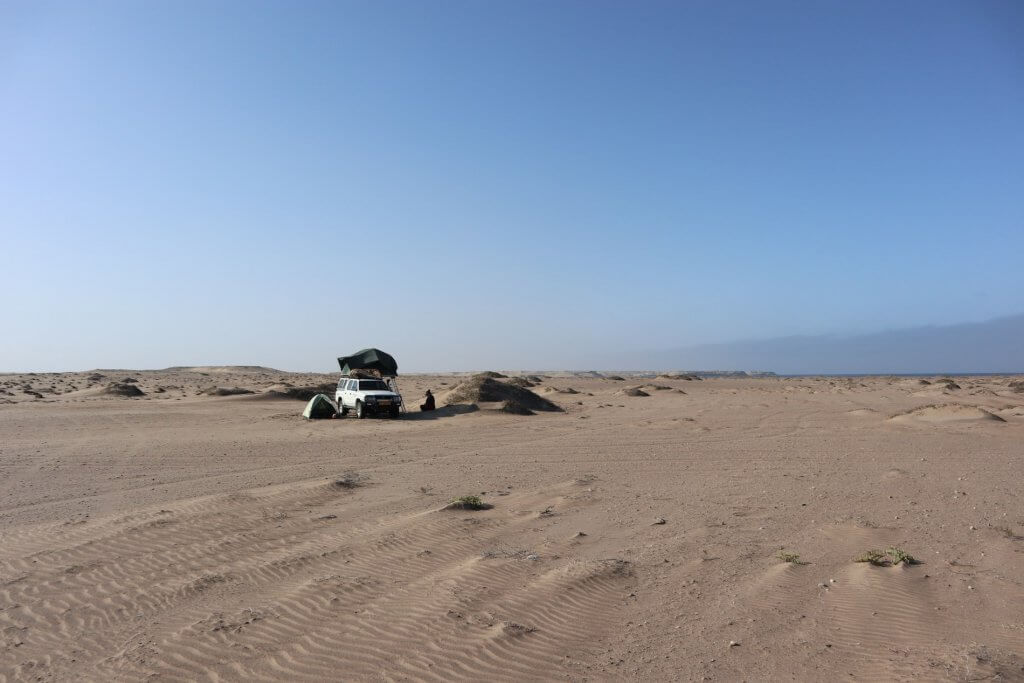
By 17:00 we left the town and drove South along the coast. We drove past many half built and what looked like abandoned construction sites, before deciding on a wild camping spot 300m inland from the beach.
The wind wasn’t as bad as we feared. Marleen made a delicious lentil and beans dish with cous-cous without any sand getting in the way.
After dinner we had condensed milk tea and could even look at photos on the laptop.
Again nobody disturbed us during the night. We were slow to get up and pack away. By the time we drove off the sun was scorching hot.
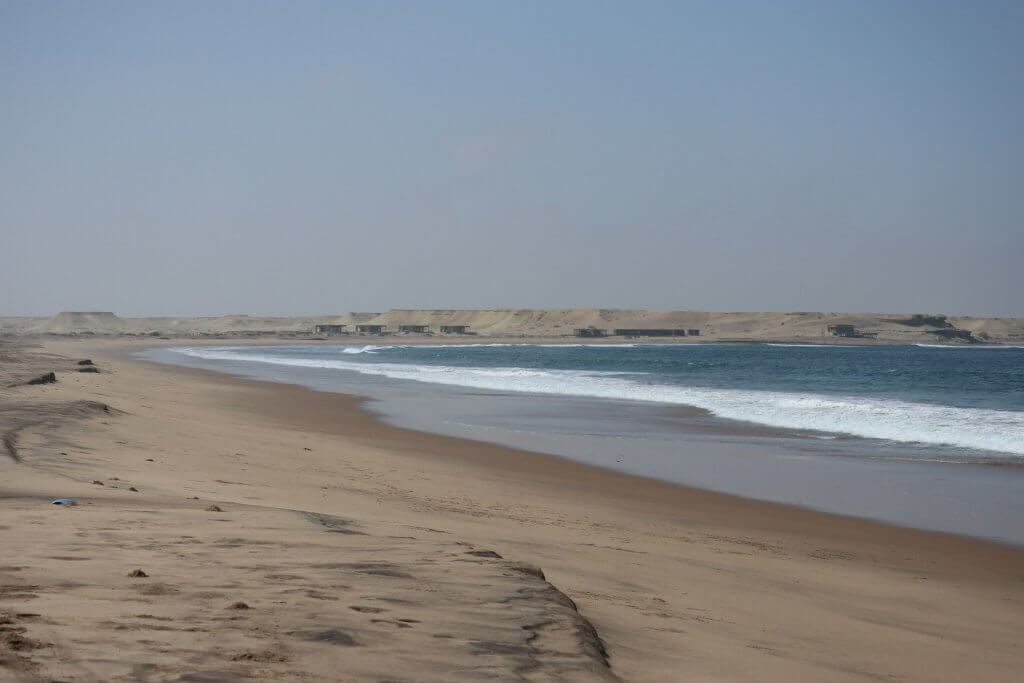
We drove further South past another abandoned half constructed resort looking place. Some tracks were going up a steep sandy slope to get to the top of the plateau as the beach turned into cliffs. Luckily we found some other tracks that lead further inland to a more sane incline.
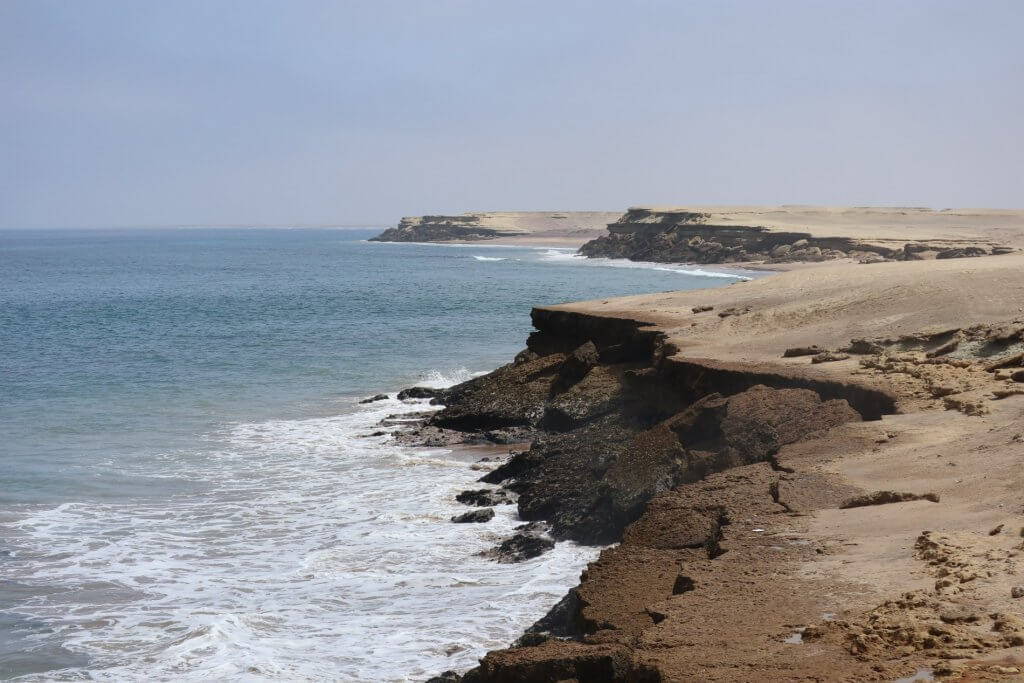
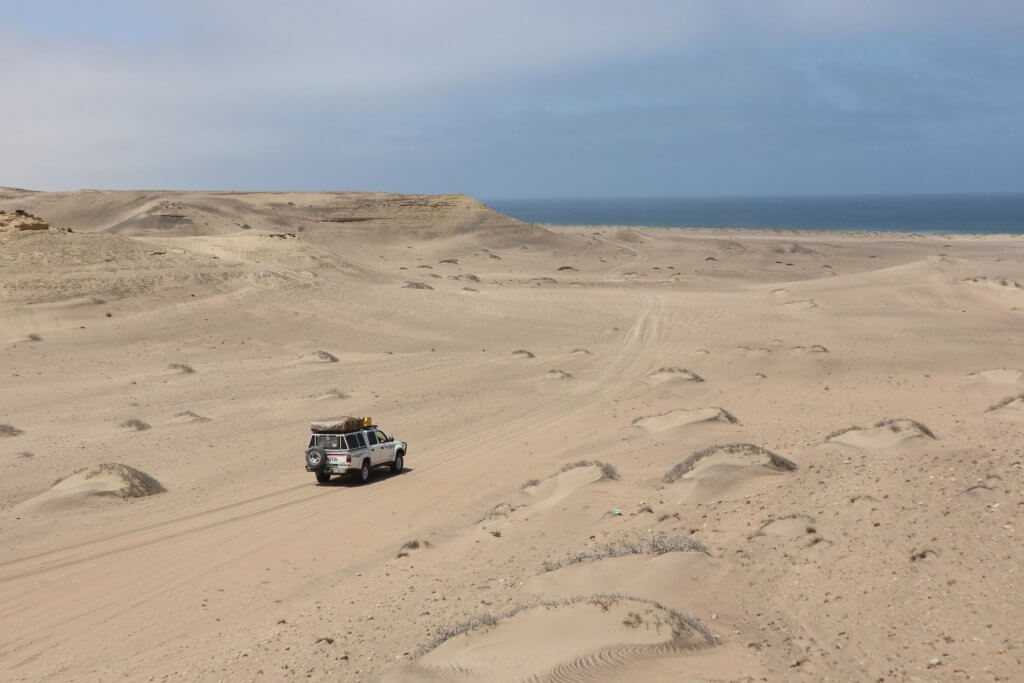
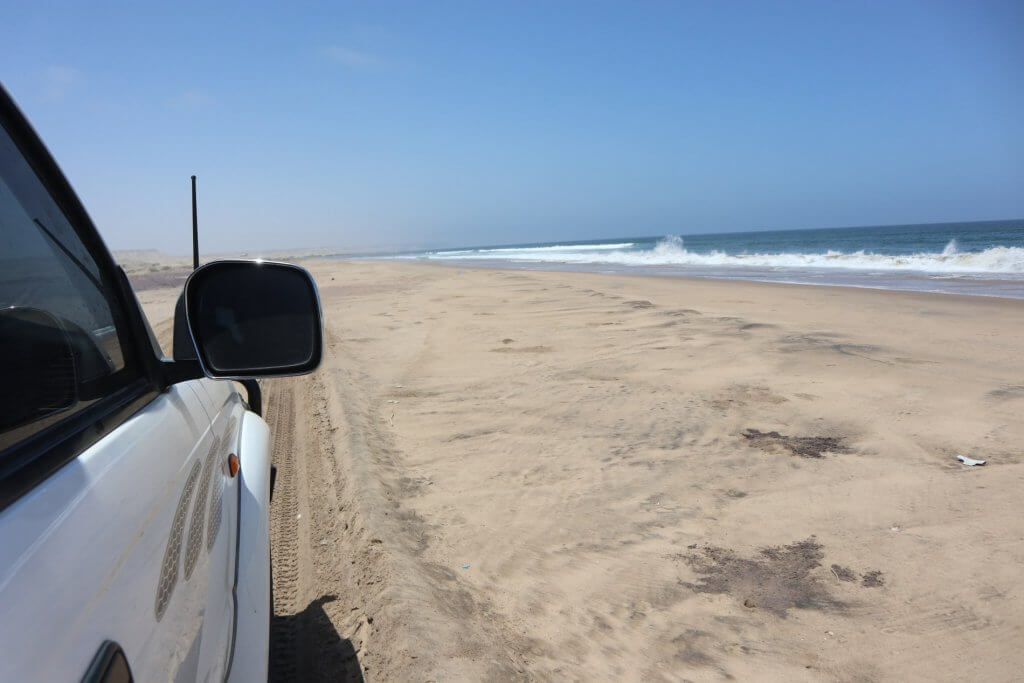
We stopped several times for photos of the insane landscape. After 30km we reached Flamingo Lodge at 11:00, having to drive the last 2 kilometers on the beach. At the lodge we decided to have lunch at 3500 kwanza per person. It turned out to be a mini buffet (only for us as we were the only patrons) of rice, chips, beans, chicken, fish and salad.
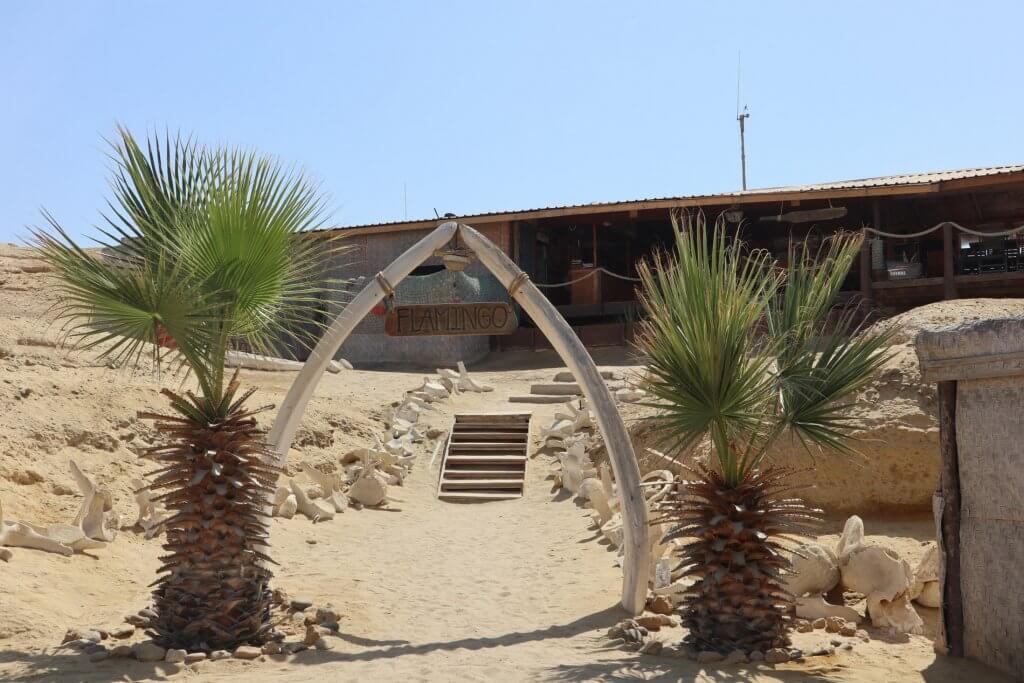
Caro went for a swim in the ocean and they then let us have a shower in one of the rooms. We all thus washed hair for the first time in four days.
From Flamingo Lodge we drove inland up the the dry Flamingo river bed. The scenery were again absolutely mind blowing.
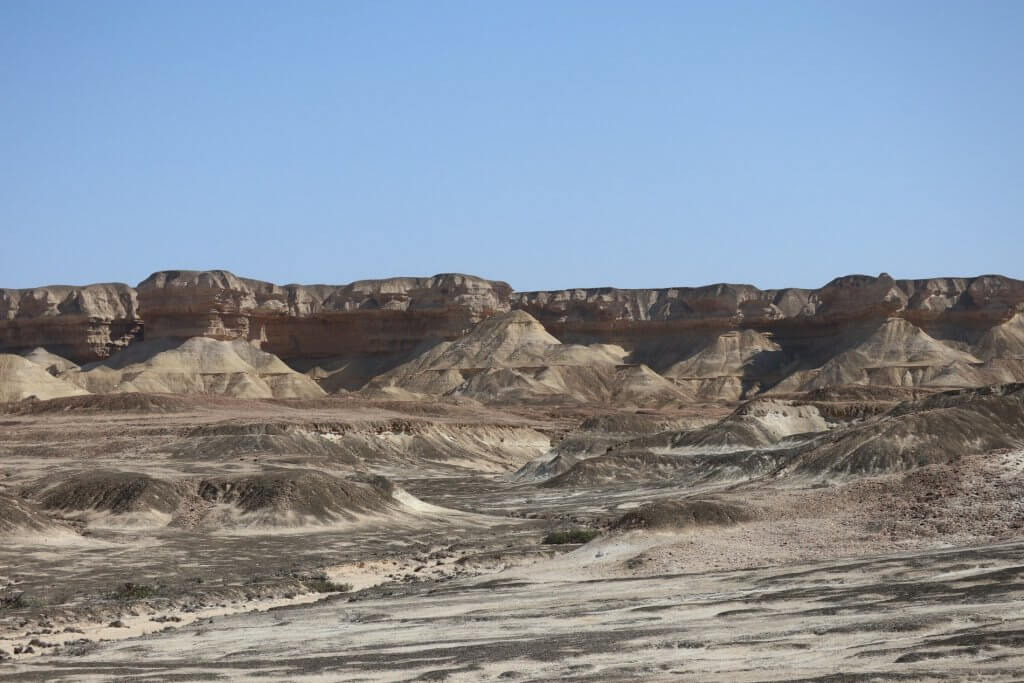
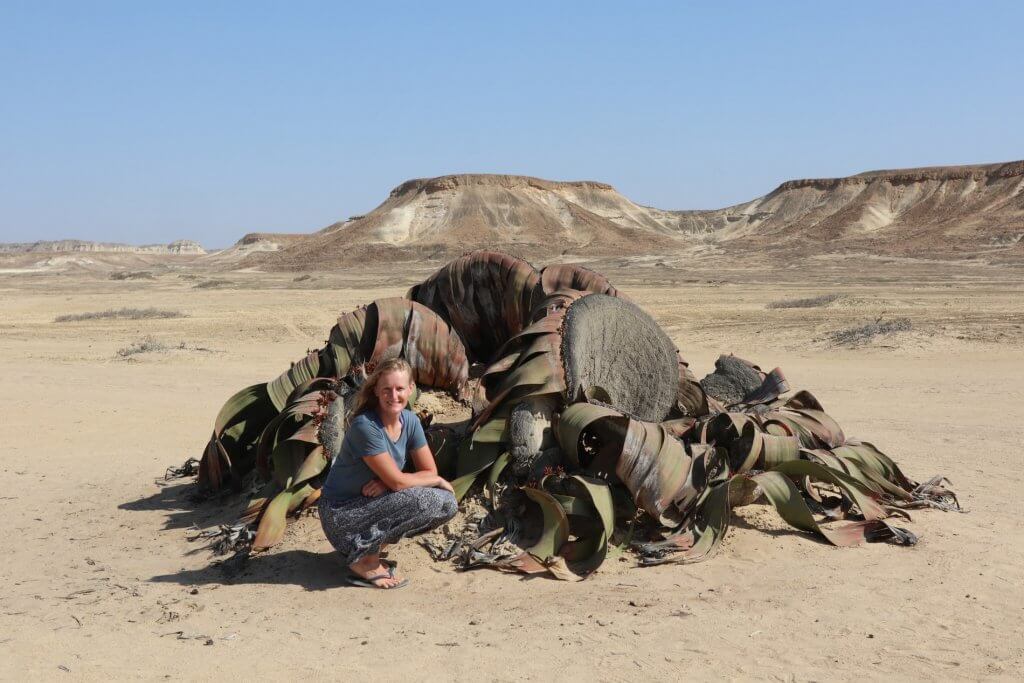 Apart from the crazy cliffs and rock formations we drove past hundreds of Welwitchias including one enormous one.
Apart from the crazy cliffs and rock formations we drove past hundreds of Welwitchias including one enormous one.
We got to the tar road leading to Tombua after 24km. We turned further South and followed the tar road for 12km. A hand painted sign indicated the left turn off to Arco. Here on top of the plateau it is completely flat and the gravel road is barely distinguishable from the hard desert floor.
The road then leads down a canyon which opens up to an oasis with trees and a desert lake. We stopped at a parking spot where three guys approached us. They drew the entrance fee in the sand. We paid a thousand kwanza per person and were then guided to two giant rock arches. What was even crazier was the amount of water in the lake that we walked along. The lake is surrounded on the one side with magnificent cliffs that looks like it crumbled into the lake over the years. On top of the cliffs it is just desert landscape so the water and vegetation around it is a true oasis.
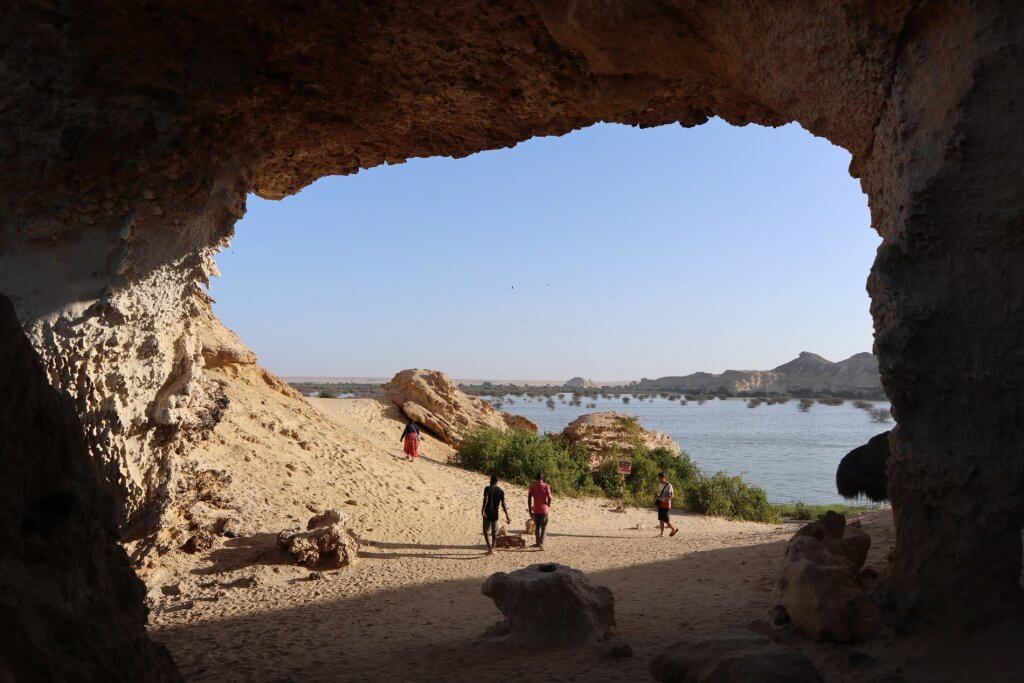
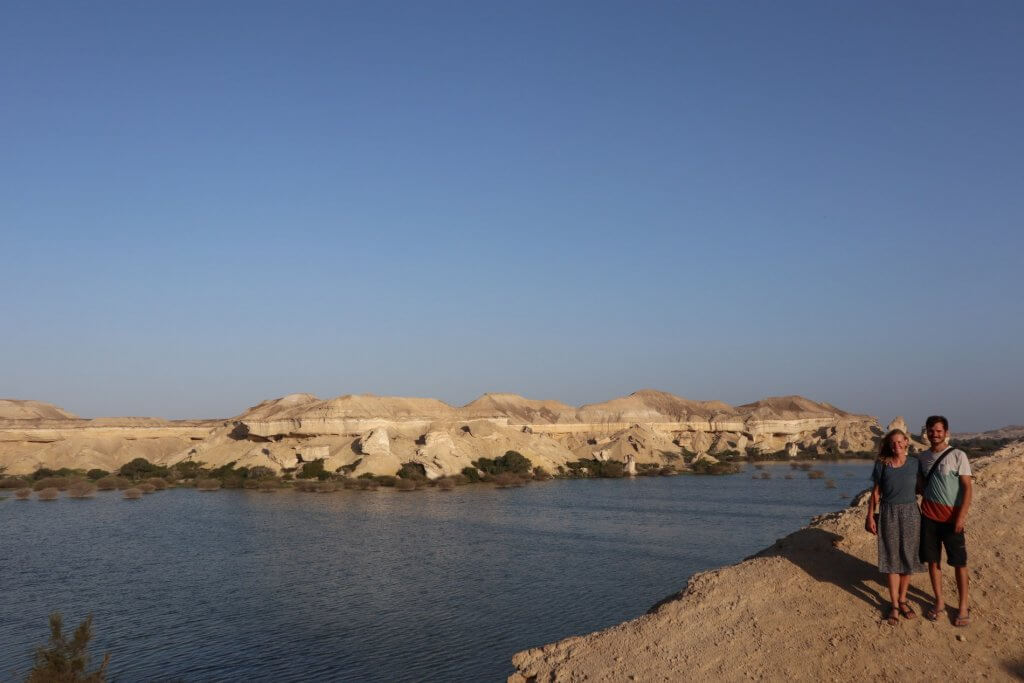
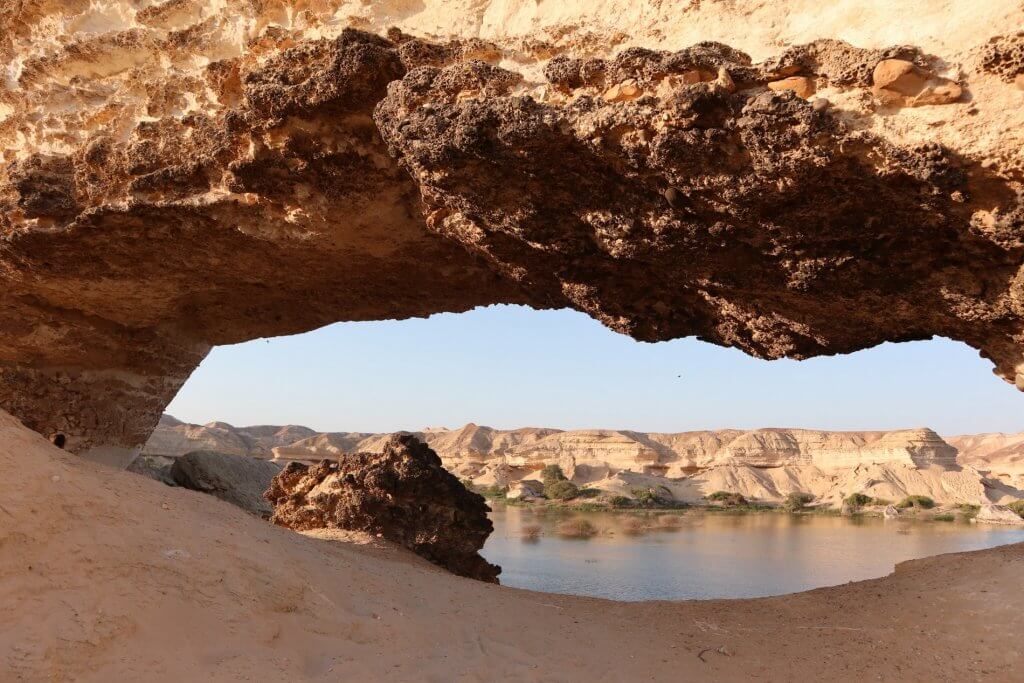
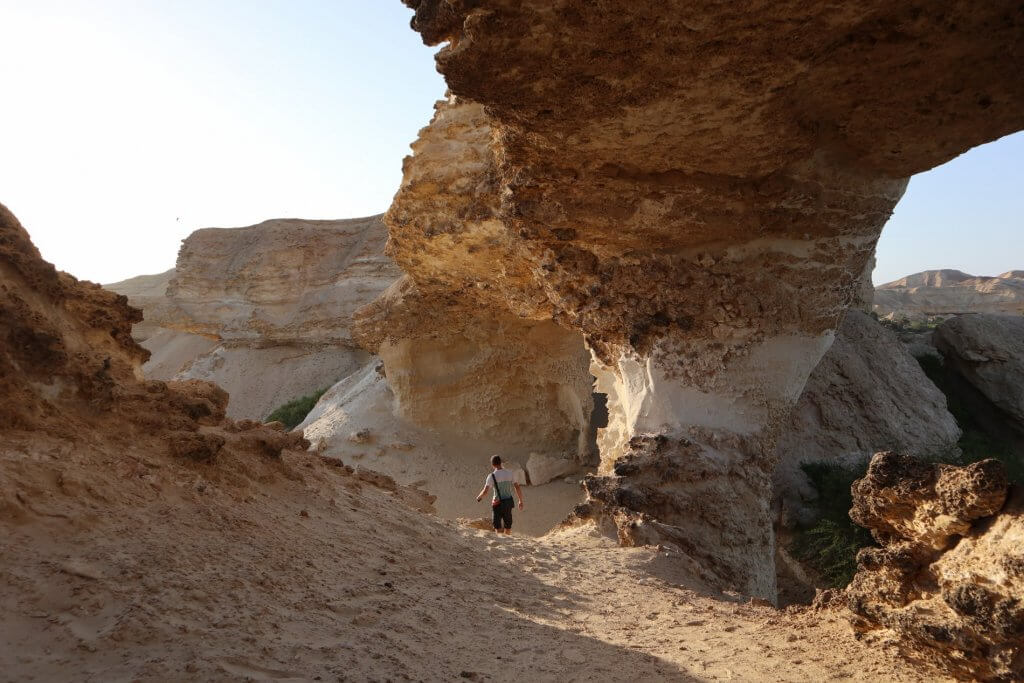
The semi-intoxicated guide was very entertaining miming out everything in lieue of being able to speak English. We took thousands of pictures and then only got back to the car at 18:45. We drove back the to the tar road and then North back to the road that leads to Flamingo Lodge. Just 500m from the tar road we found a small valley with a flat spot for camping.
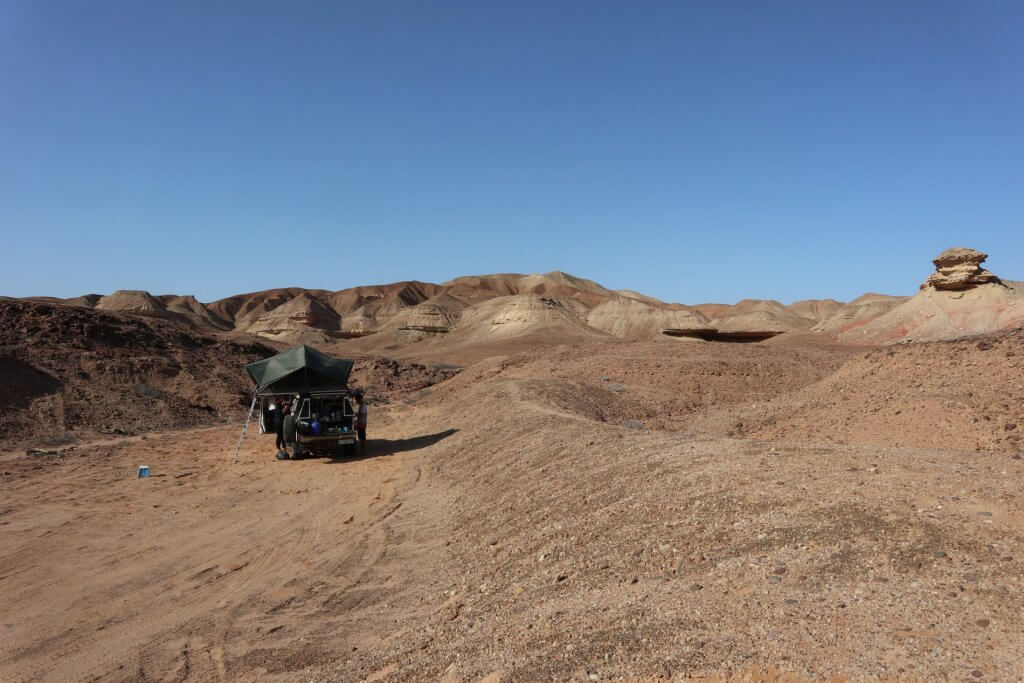
At night we could see the lights of cars passing on the tar road far in the distance, but as usual nobody bothered us during the night. Caro made tuna pasta and then we watched the stars for a while. Every night the moon starts a bit higher when it gets dark, but sets before we go to bed giving us the brightest stars we’ve ever seen.
The next morning we drove on the tar road back to Namibe. The main road was blocked off by police so we parked in a side street and walked to a cafe in the main road for breakfast. While we sat there we saw ambulances and a firetruck and more police tape being put up. We thought that some big protest or military parade or some political thing was going to happen. Imagine our surprise when, just as we left, cars came racing down the road and taking corners with squelching tyres and ear deafening acceleration. The roads were thus blocked off for a racing event, which also explains the ambulances and fire trucks.
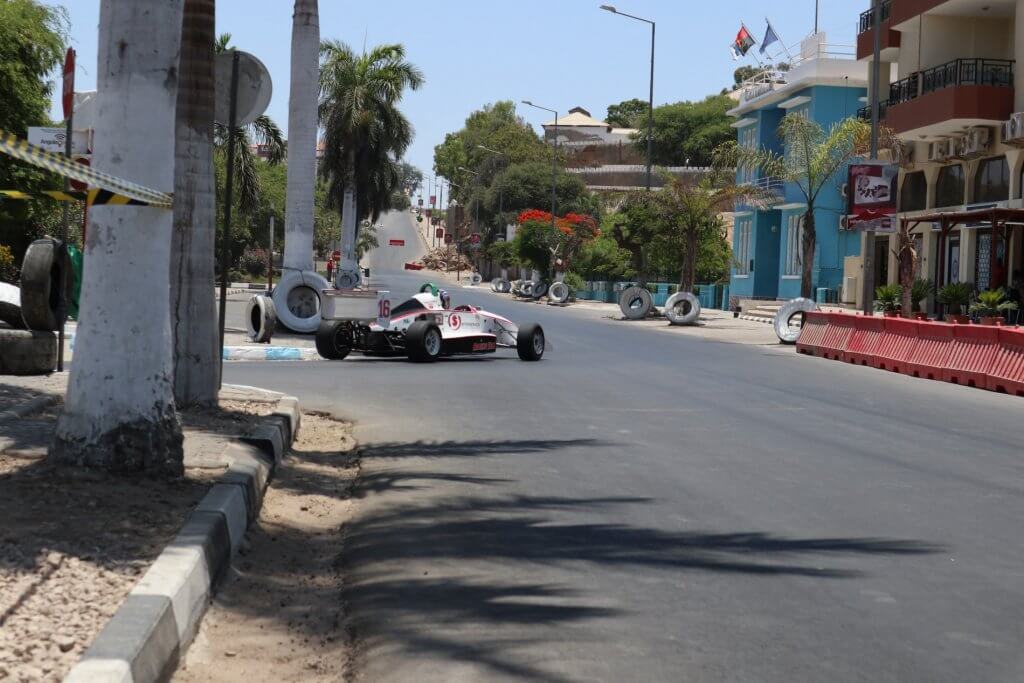
From Namibe we took the EN100 to Lucira which is a perfect tar road for 182km, bar three ghost bridges. The tar road leads to a perfect cement bridge, but the road is between one and three meters lower than the bridge’s surface. So one has to drive around the bridge through the dry riverbed. There is absolutely no construction equipment around so obviously it isn’t going to be fixed anytime soon.
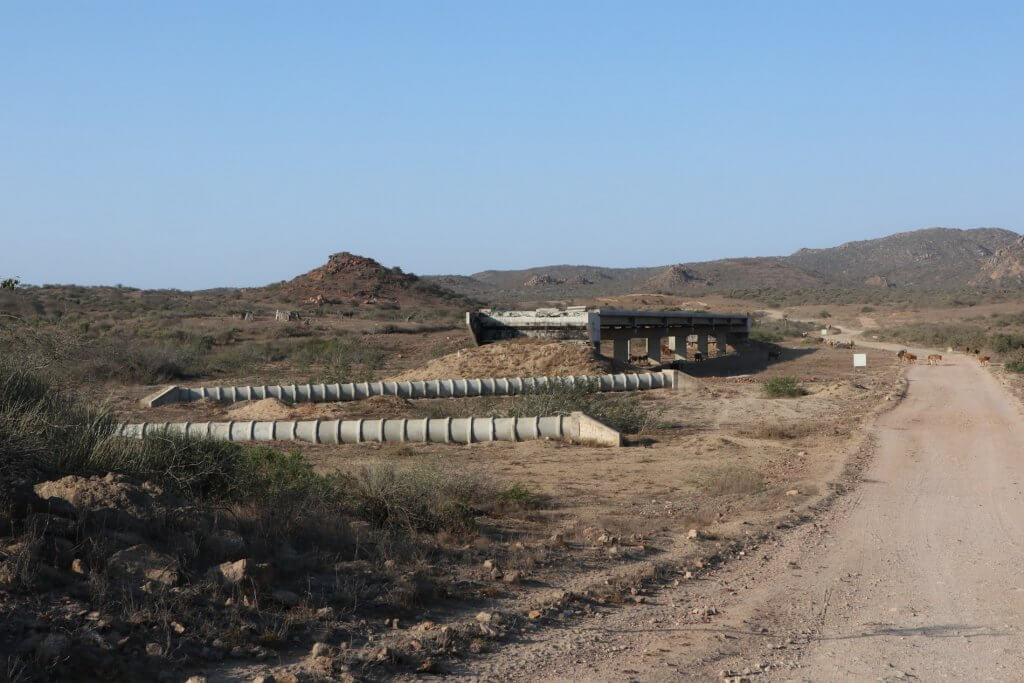
At Lucira we past another ghost bridge, but then the tar disappeared completely. A very rough and steep track leads over a mountain, which makes it feel impossible that there will ever be a tar road. For the next 70km we passed seven more ghost bridges and had to either drive on sections of graded road with massive ‘speed’ bumps (actually giant heaps meant to block any traffic, probably from back when it was still under construction) or next to the road on very corrugated tracks.
At some parts they already put in water drainage pipes, but for the road to eventually go over it they would literally have to move mountains. The ambitiousness of the project which is now at a complete standstill is amazing.
The sun already started to set by the time we reached the turnoff to Binga Bay, a wild camping spot indicated on iOverlander. A decent two spoor track lead 7km to the cliffs which was followed by a very steep descent to the beach. Before getting to the beach we however got to a barrier. A guard came running up and we just said: “Praia” (Beach) and he opened up the barrier.
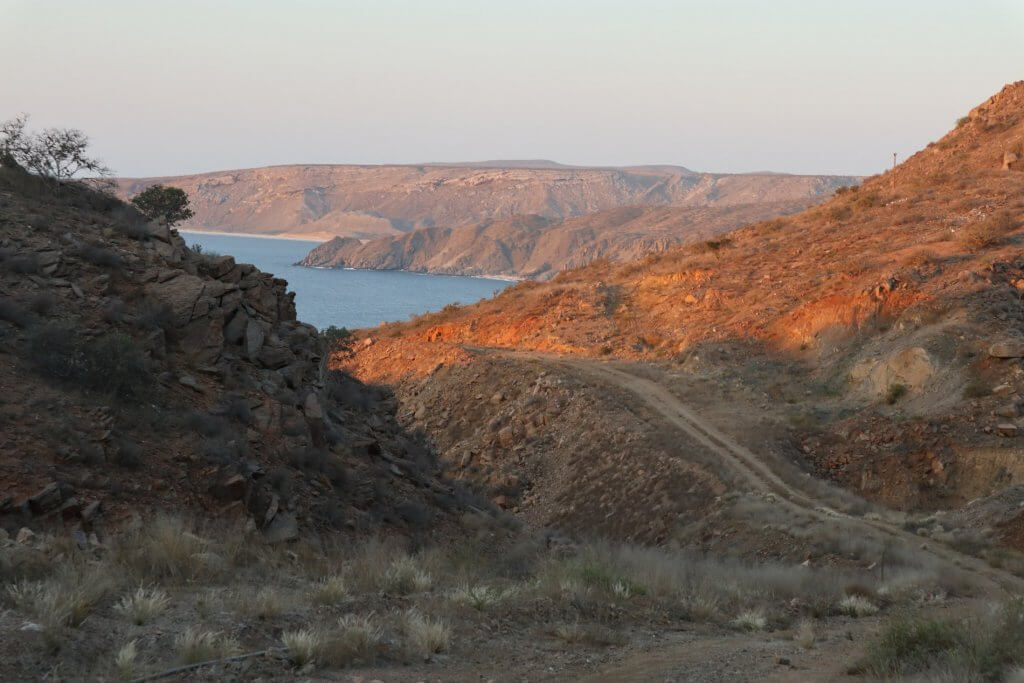
The setting sun and the turquoise waters with the white sand beach nestled between rock cliffs were mind blowing and like something from a movie. We just sat on the beach and watched the last rays of the sun painting the sky in bright warm colours contrasting with the blue ocean.
We made a campfire to heat water for a quick bowl shower. And chatted until 21:00 before going to bed under the bright starry night sky.
Given the beauty of Binga Bay we decided to stay another night. Caro build a sand castle and we swam in the moderate ocean water.
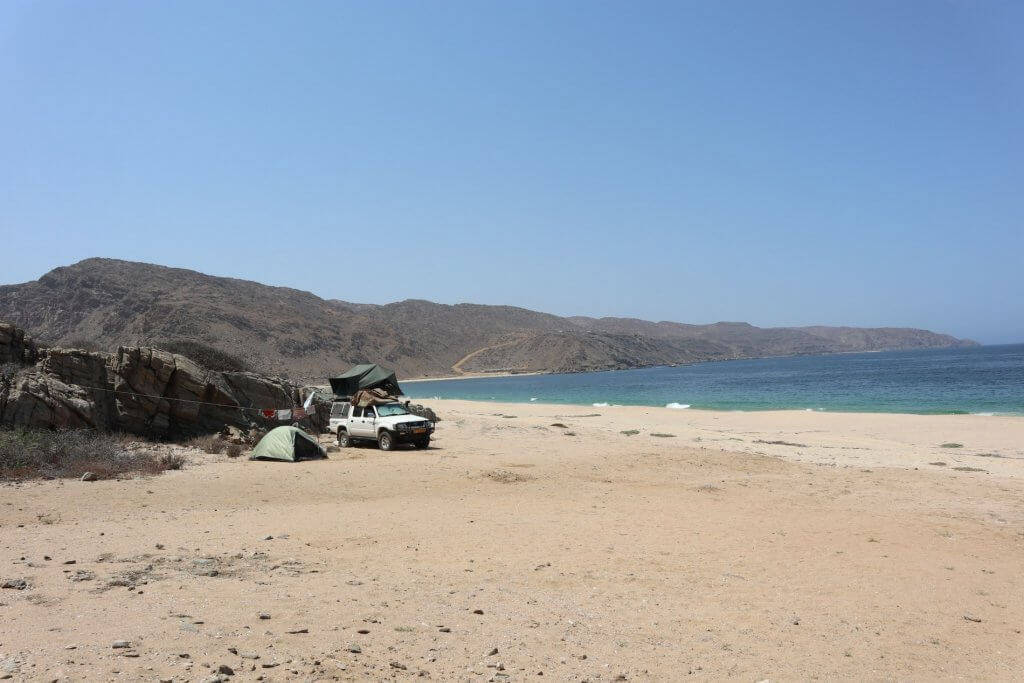
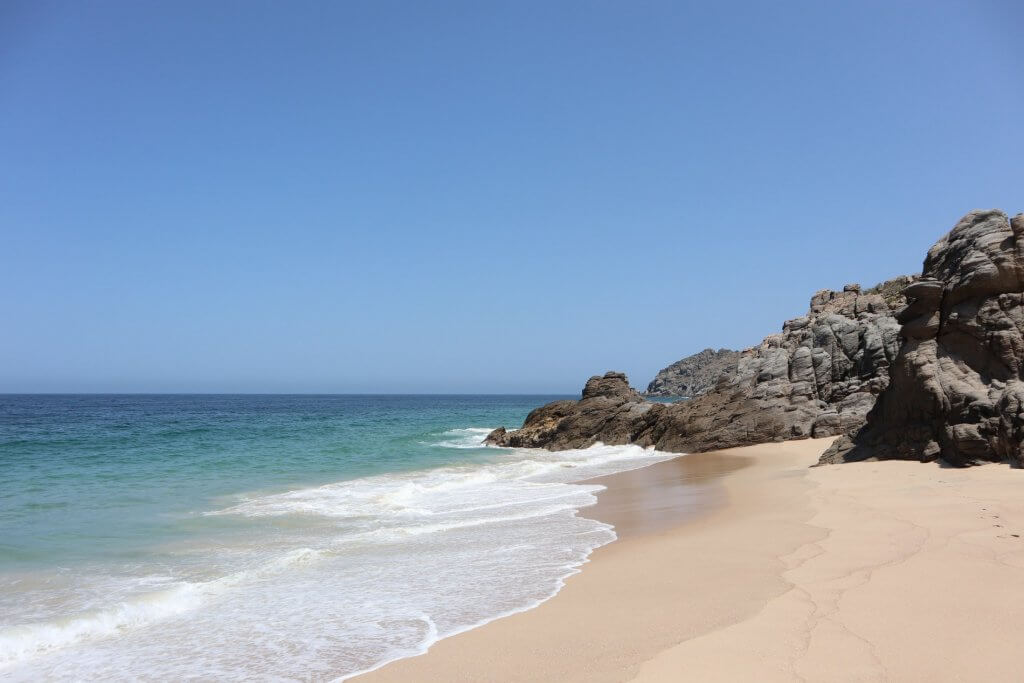
Just before lunch fisherman came past on a small boat and held up a sea creature. We thought it was a fish and signalled for them to stop. One guy jump in the ocean and swam to shore with the fish. It turned out to be a squid. Given the language barrier we ended up buying the squid for 1500 kwanza. The guy put the money in a plastic bag and swam back to the boat.
Caro cleaned the squid and made calamari for lunch. We lounged around for the rest of the day looking at our pictures and videos so far and reading. For dinner we had the rest of the squid. It was marinated since lunch and the fried in a batter, so it tasted a lot better than at lunch.
The next morning we woke up early from the sound of raindrops on the tent. We proceeded to pack up quickly in case the rain got stronger, which could turn the steep uphill into a slippery slope. Luckily it was only a few drops. On the other end of the beach we drove past a South African family who arrived late last night. Their scouting Angola for guided tours that they want to offer.
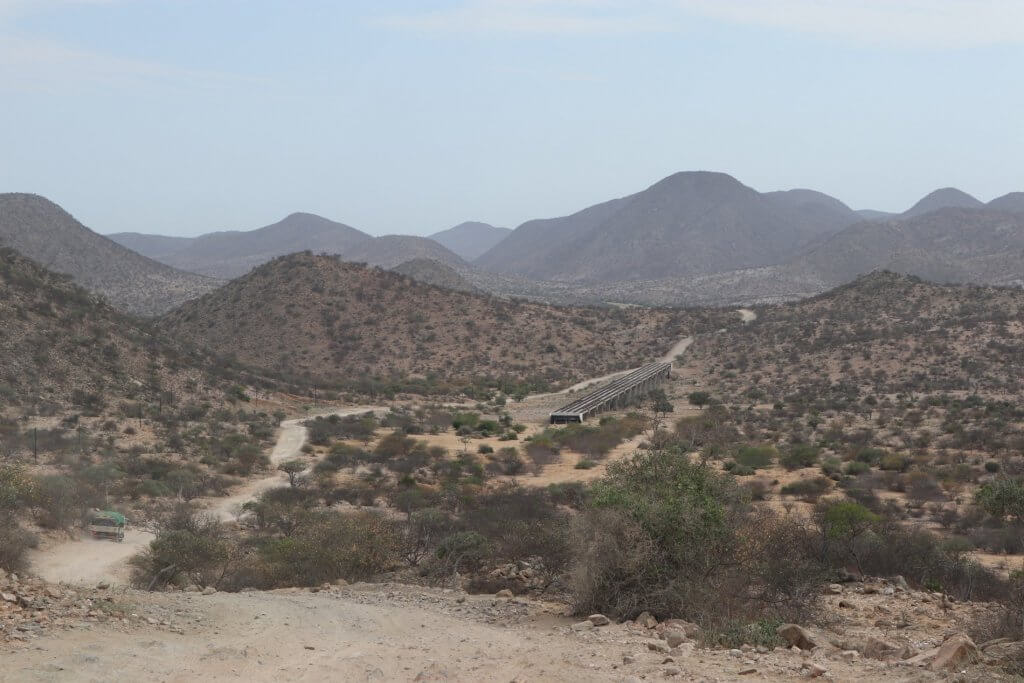
The bad road with the ghost bridges continued for another 70 kilometers before it turned to tar again just as suddenly as it started.
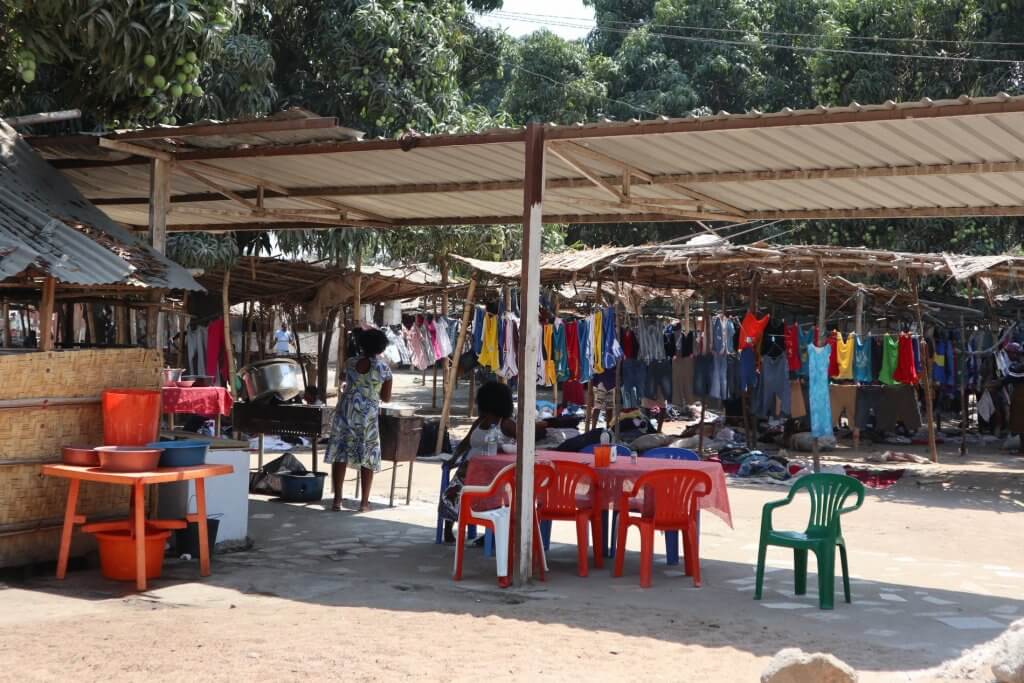
We stopped in Dombe Grande to look at a local market and then noticed we had flat tyre. We inflated it and drove out of town before stopping to fix it away from all the spectators. It was another side wall puncture so Hugo put a plug in with the wheel still on.
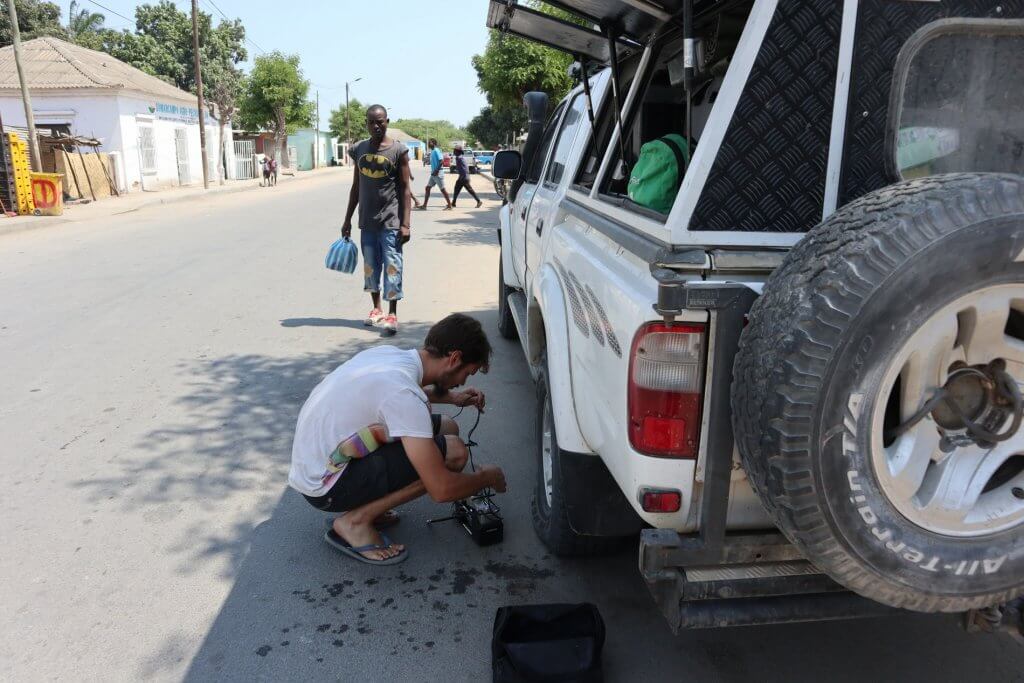
With the wheel fixed we continued to Baia Farta and Baia Azul, but there’s not much to see. In Benguela we stopped at a gigantic Shoprite for some shopping. On trying to leave Benguela we got lost in the rural area due to roadworks and unclear detour signs.
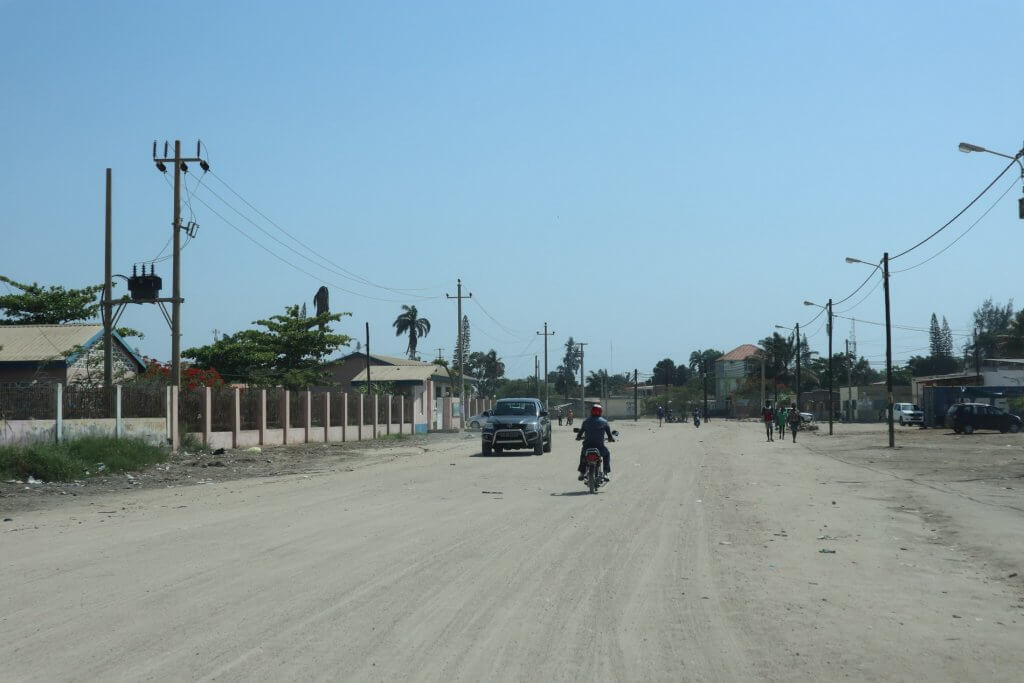
In the end a local jump on his motorbike and told us to follow him, taking us in completely the opposite direction of what the detour sign said and then we eventually found the highway again. We drove to Lobito and unto the peninsula and stopped at Alfa Bar. They showed us where we can camp on the beach, next to the restaurant, for free, if we just eat there. We ordered lunch and then Hugo saw a hotel for potentially not too expensive. We thus decided to go and check it out after lunch as we’ve been wild camping for 7 nights in a row.
The hotel was indeed very affordable (10 000 kwanza (R400) for a double room) and didn’t look that bad. We thus checked in and made ourselves comfortable.
We didn’t realise how tired we were from all the driving and wild camping and ended up just resting in our rooms for the rest of the day. That’s after taking a proper shower for the first time in 4 days. For dinner we made cheese rolls and then we went to bed.
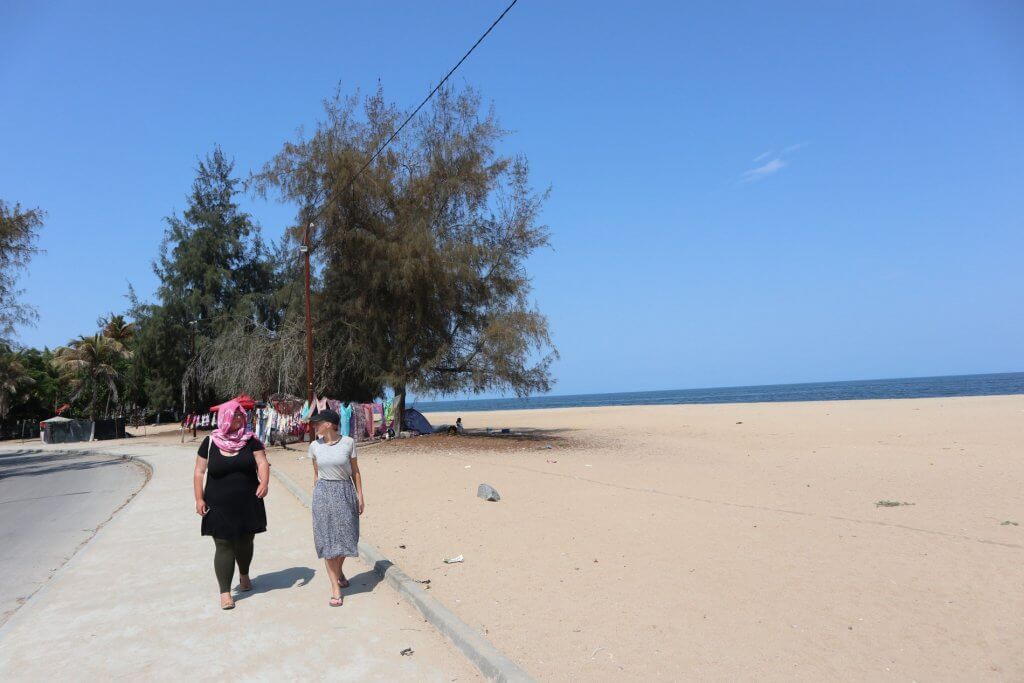
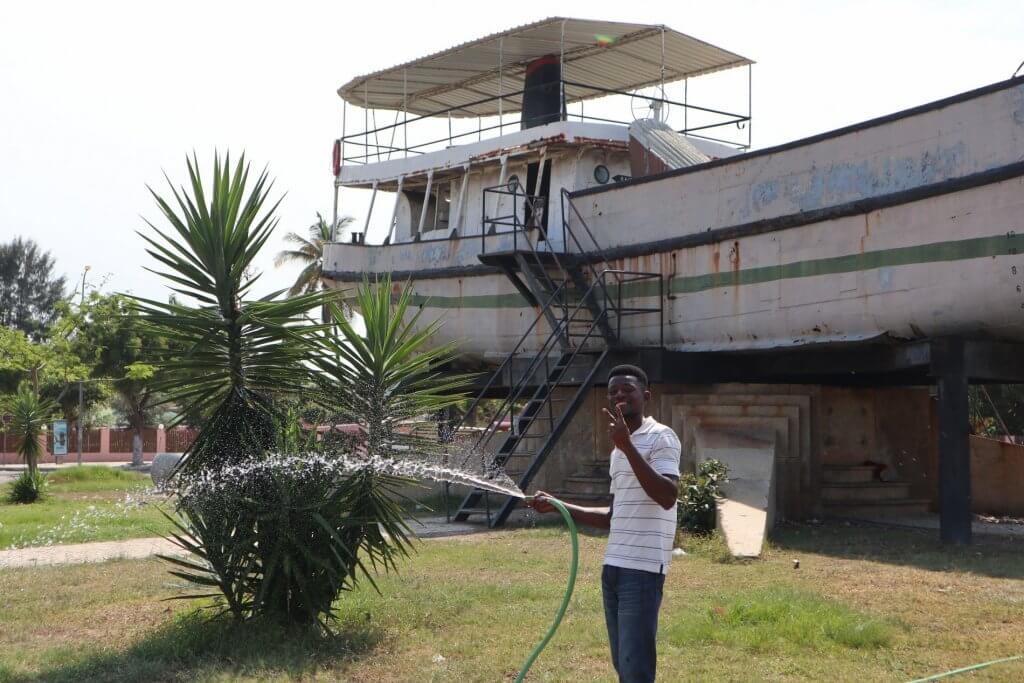
The next morning we even got free breakfast. After breakfast we walked to the end of the peninsula. By the time we got back to the hotel we were hot and sticky. We took a last shower and then checked out.
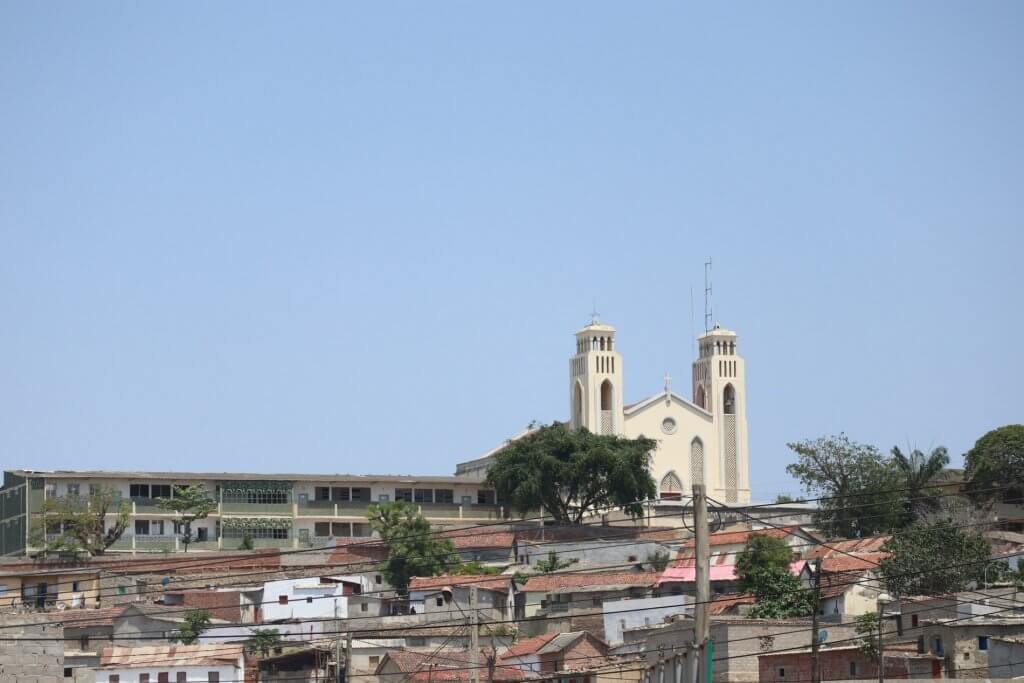
Lobito is our turning point so we started heading South again. In Benguela we turned away from the coast and headed South-East back to Lubango. The landscape quickly turned into woodlands with beautiful big trees and rolling hills.
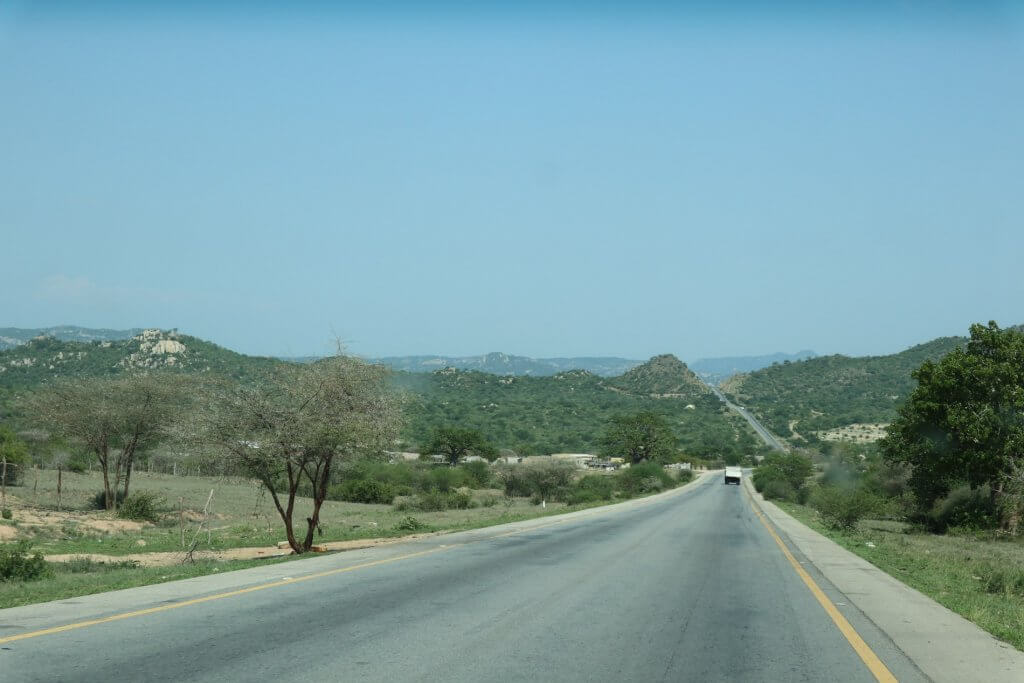
We wildcamped more or less halfway between Benguela and Lubango about 500m from the main road on a two-spoor track.
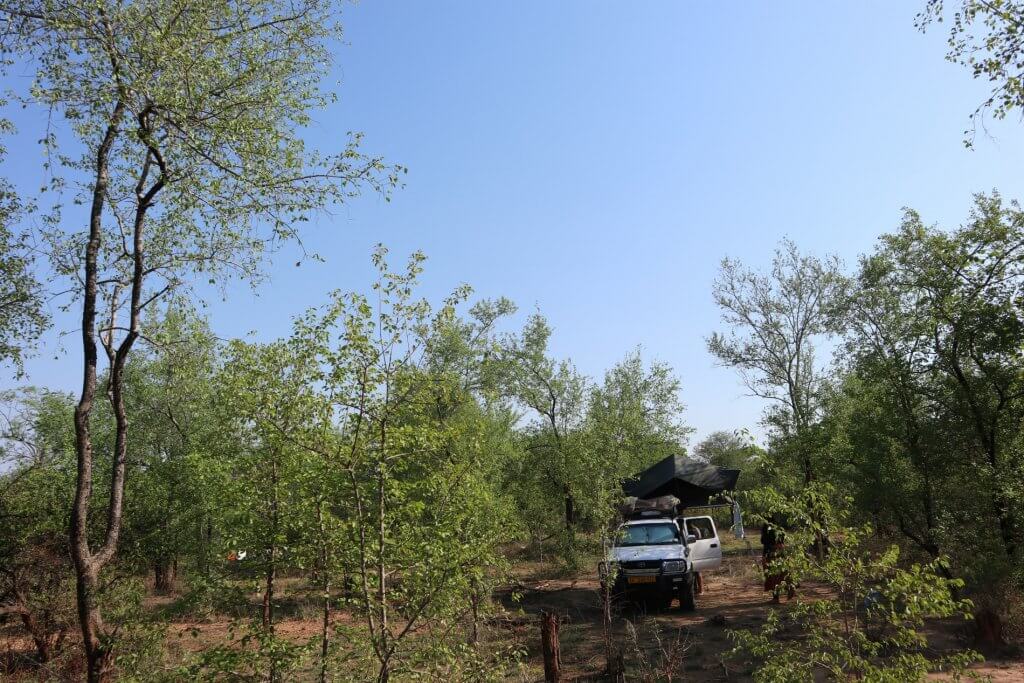
It was still early so we decided to wash clothes and put up a whole washing line. For dinner we had pasta with bully beef, beans and chakalaka. Our only visitors was a herd of cattle that walked through our camp without a herder. The next morning our clothes were still wet from the dew so we packed up slowly to give the clothes a chance to dry from the morning sun. We had French toast for breakfast.
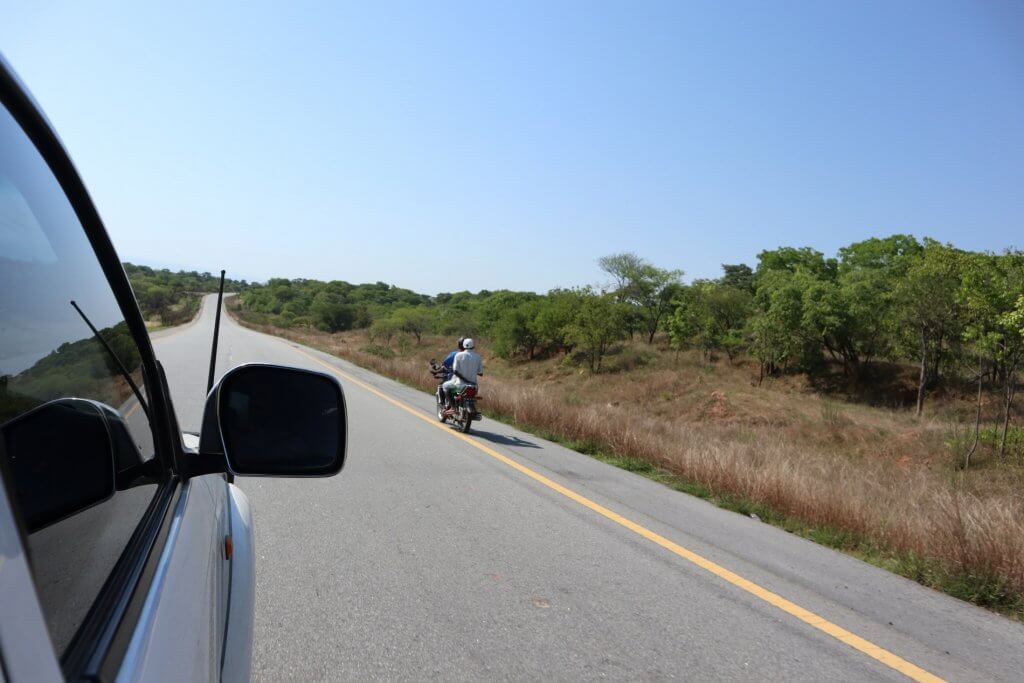 Today was the longest day of driving yet. We drove to Lubango and then all the way back to Xangongo. There we refuelled with cheap Diesel for the last time, spending the last of our Kwanzas.
Today was the longest day of driving yet. We drove to Lubango and then all the way back to Xangongo. There we refuelled with cheap Diesel for the last time, spending the last of our Kwanzas.
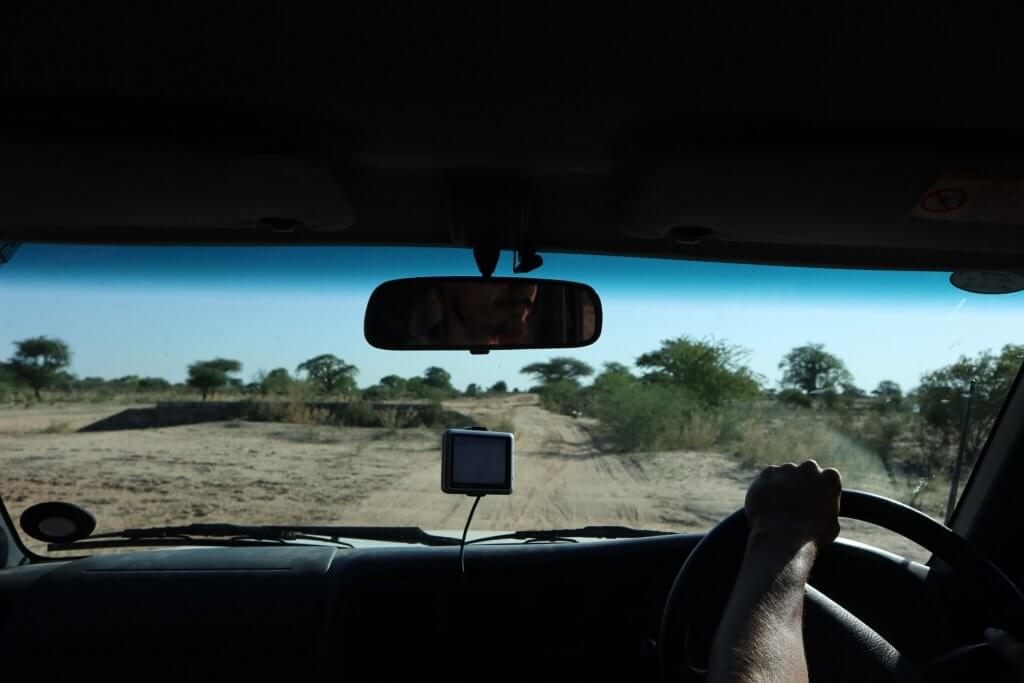
We then took a very bad gravel road for the last 90km to the Omahenene border. We made it to the border just after 18:00 Namibian time. We made it through without too much hassle but had to wait for the Road Tax lady to return from home.
From the border we still drove to Ruacana where we only arrived at 20:00. We treated ourselves to dinner in the restaurant before retiring to bed.
That concluded our very brief introduction of Angola. We will definitely return to explore more of it before it becomes too commercial.

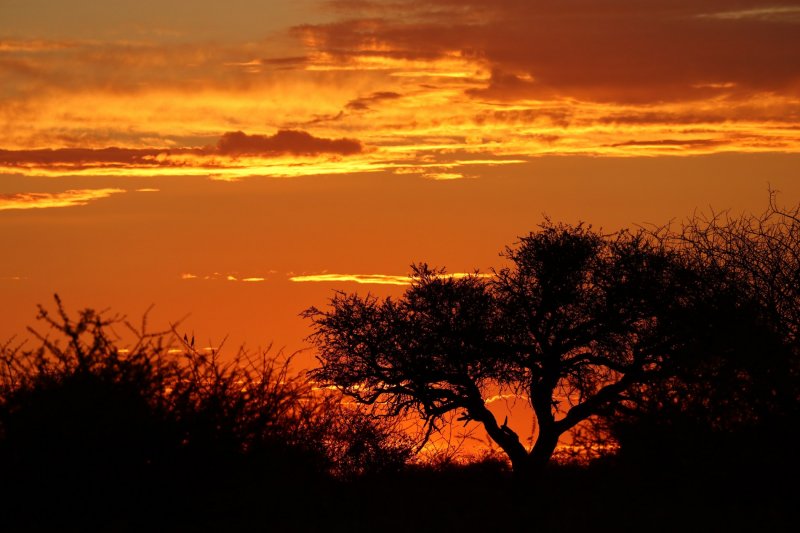
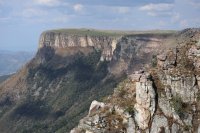
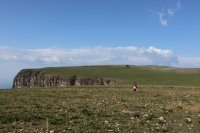
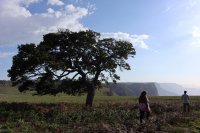
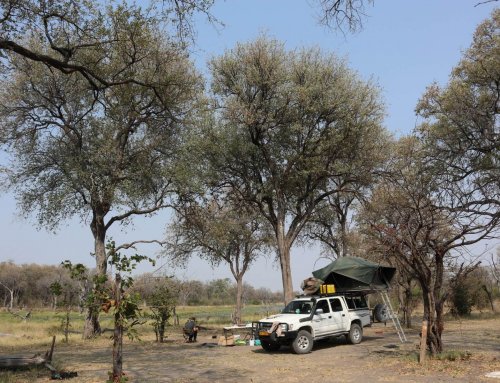
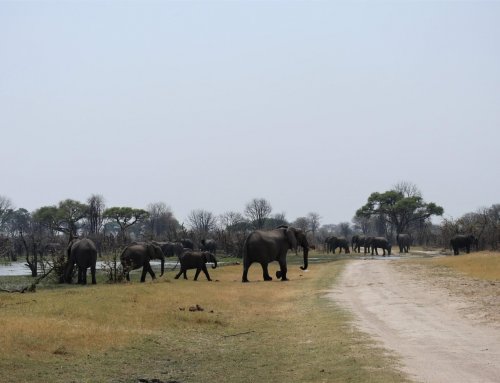
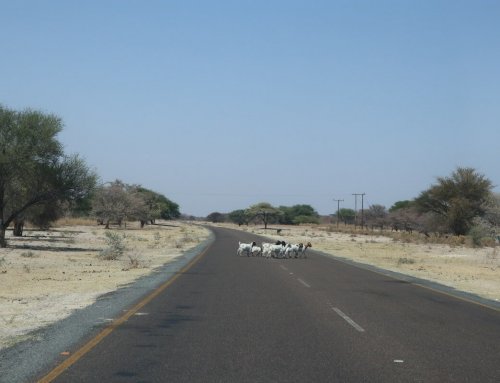
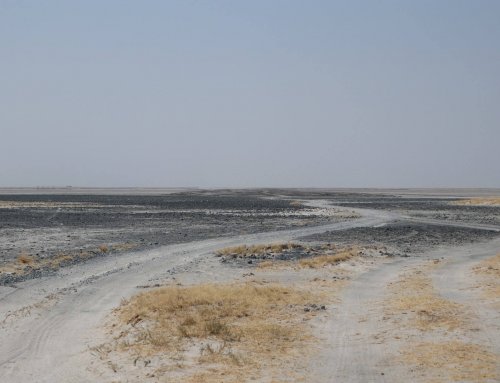
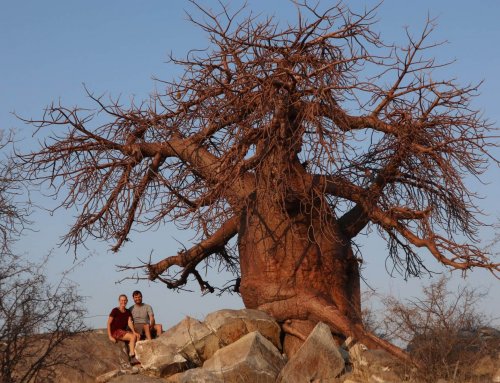
Leave A Comment